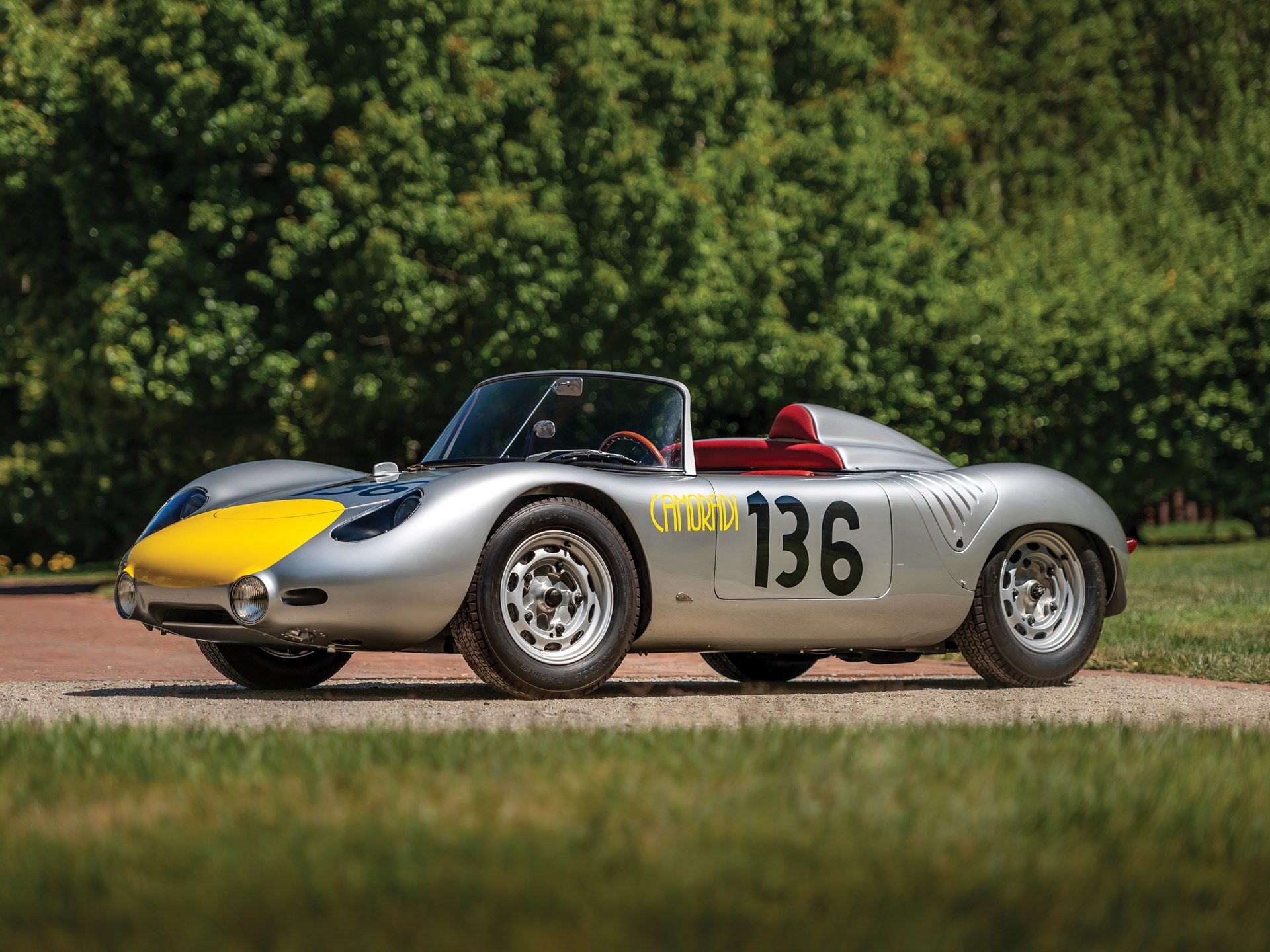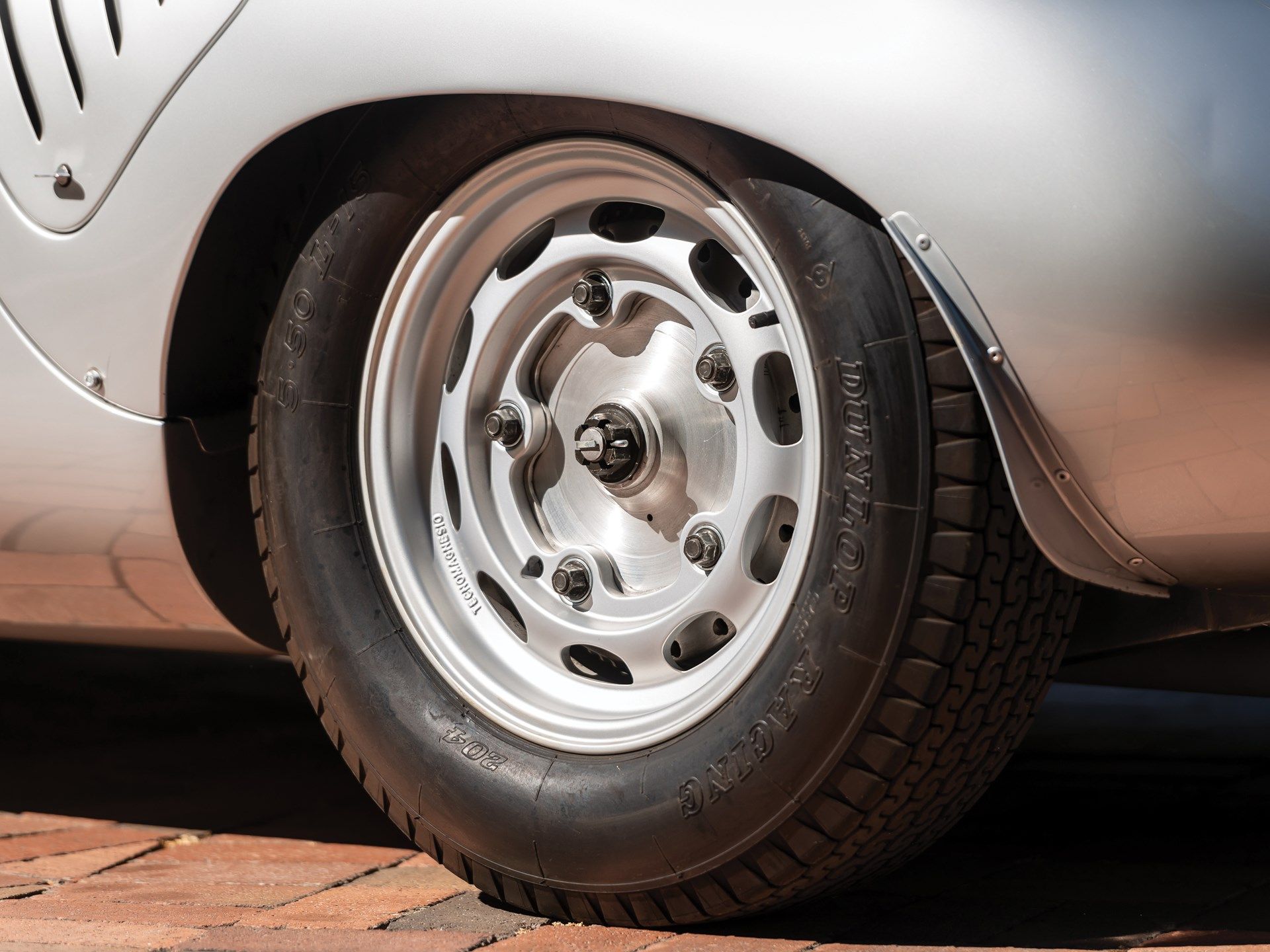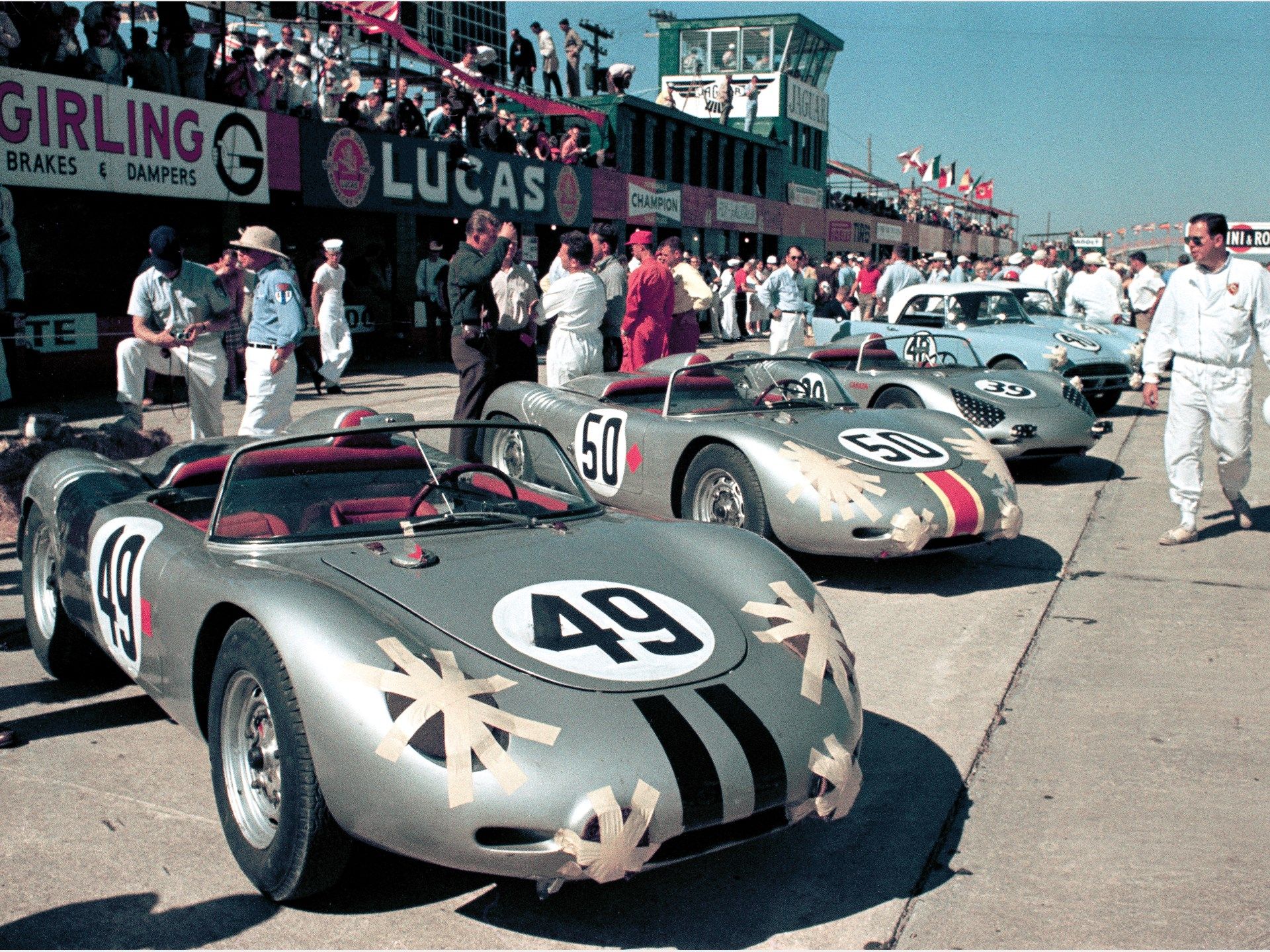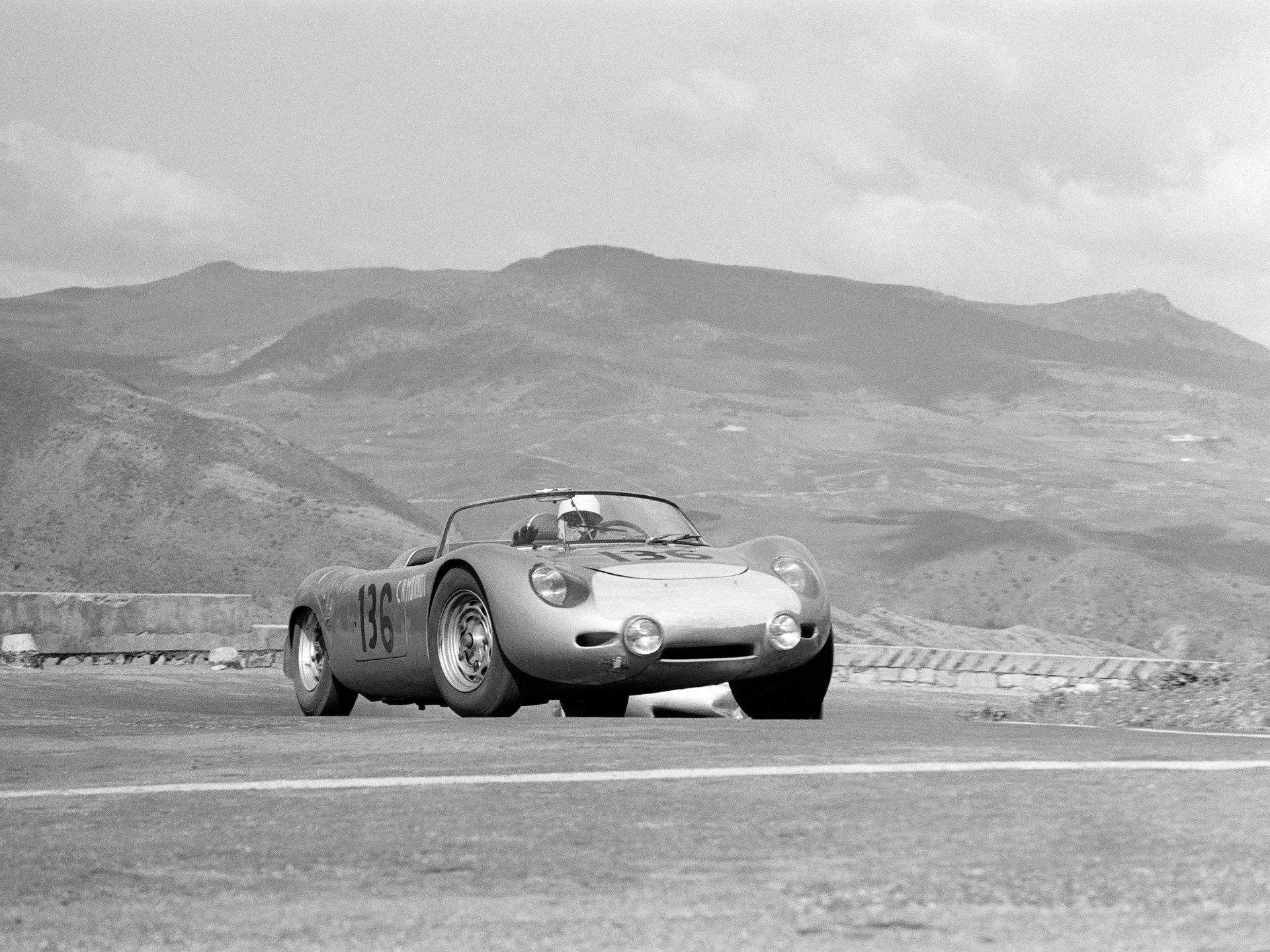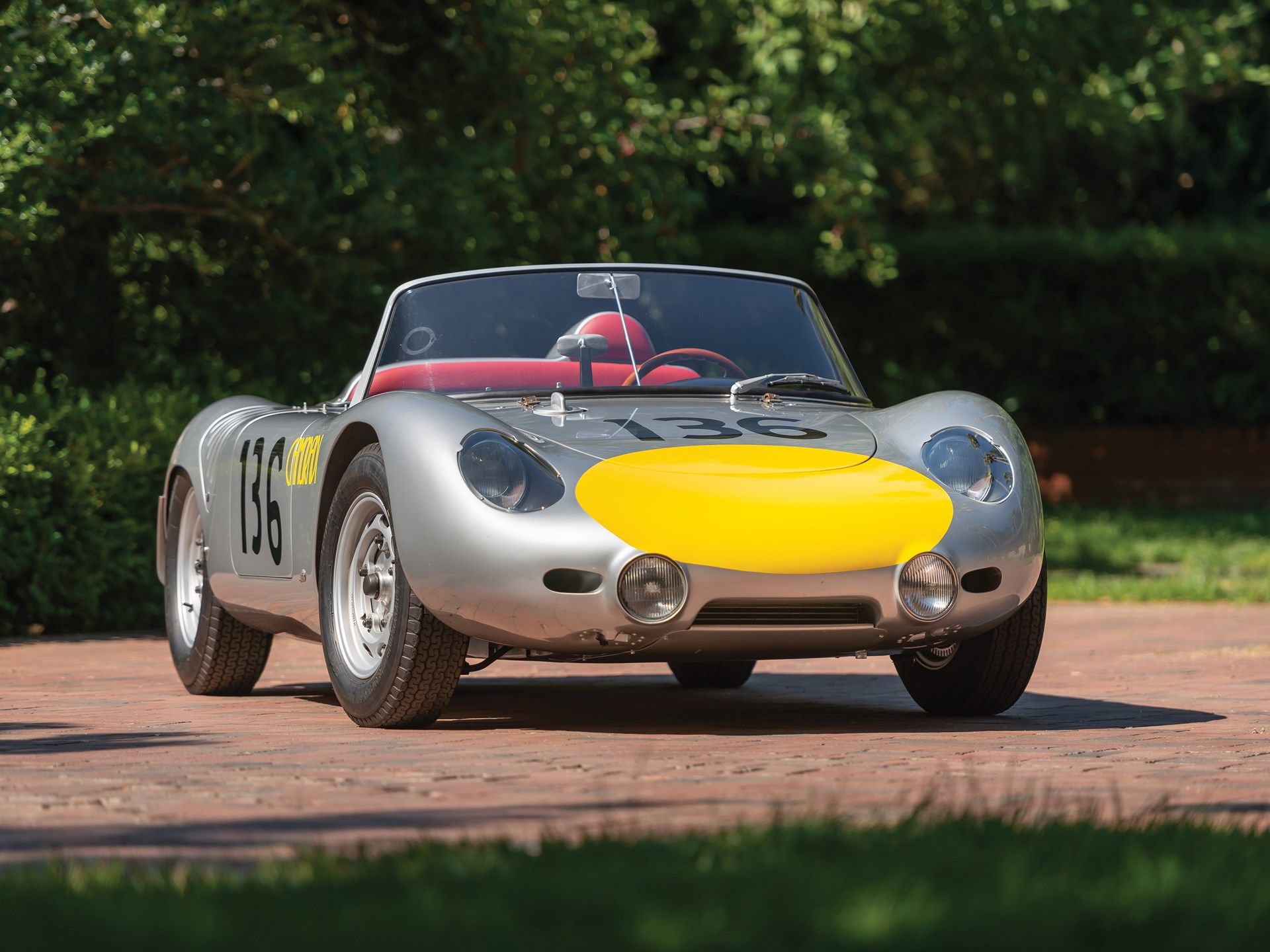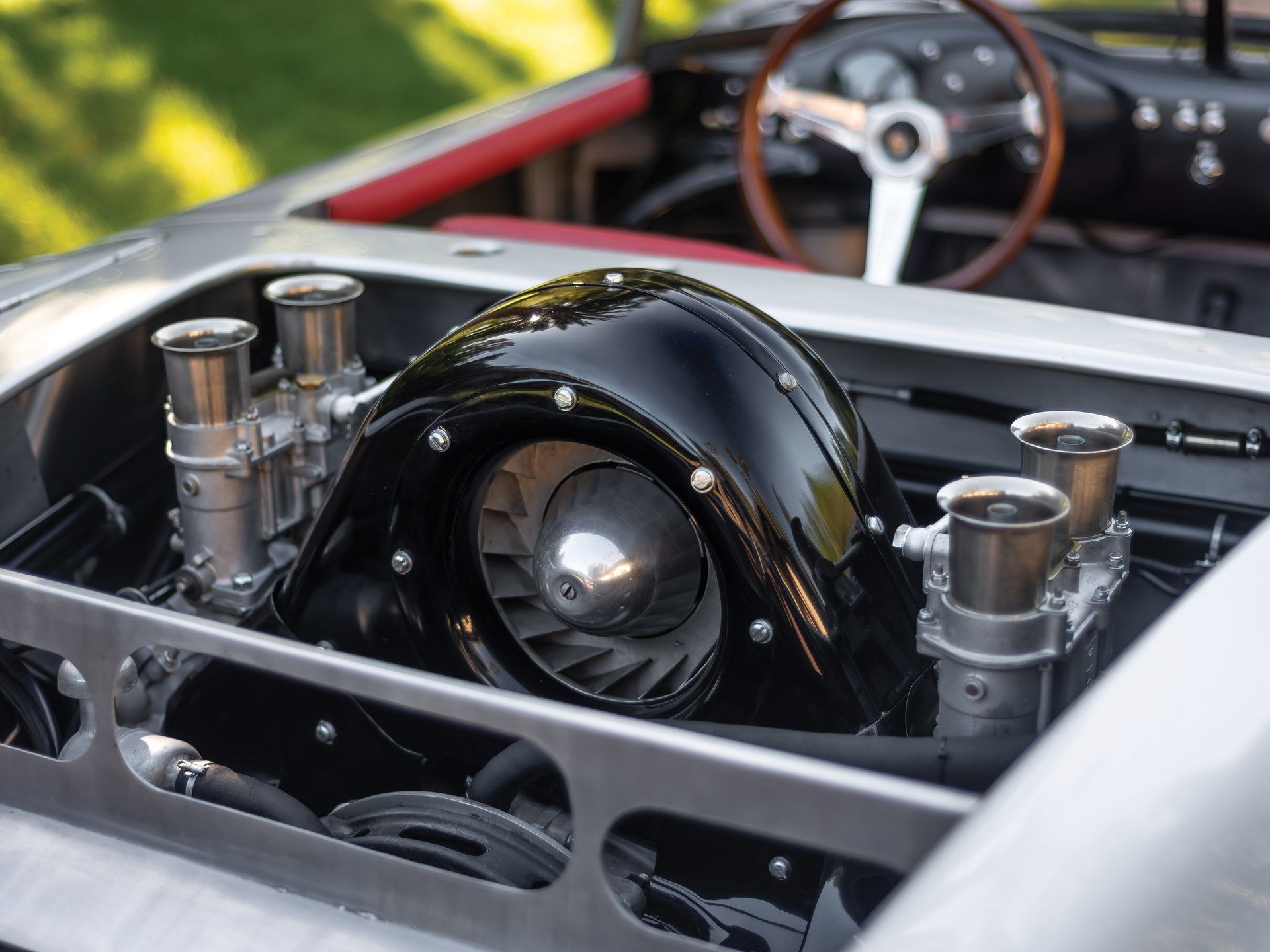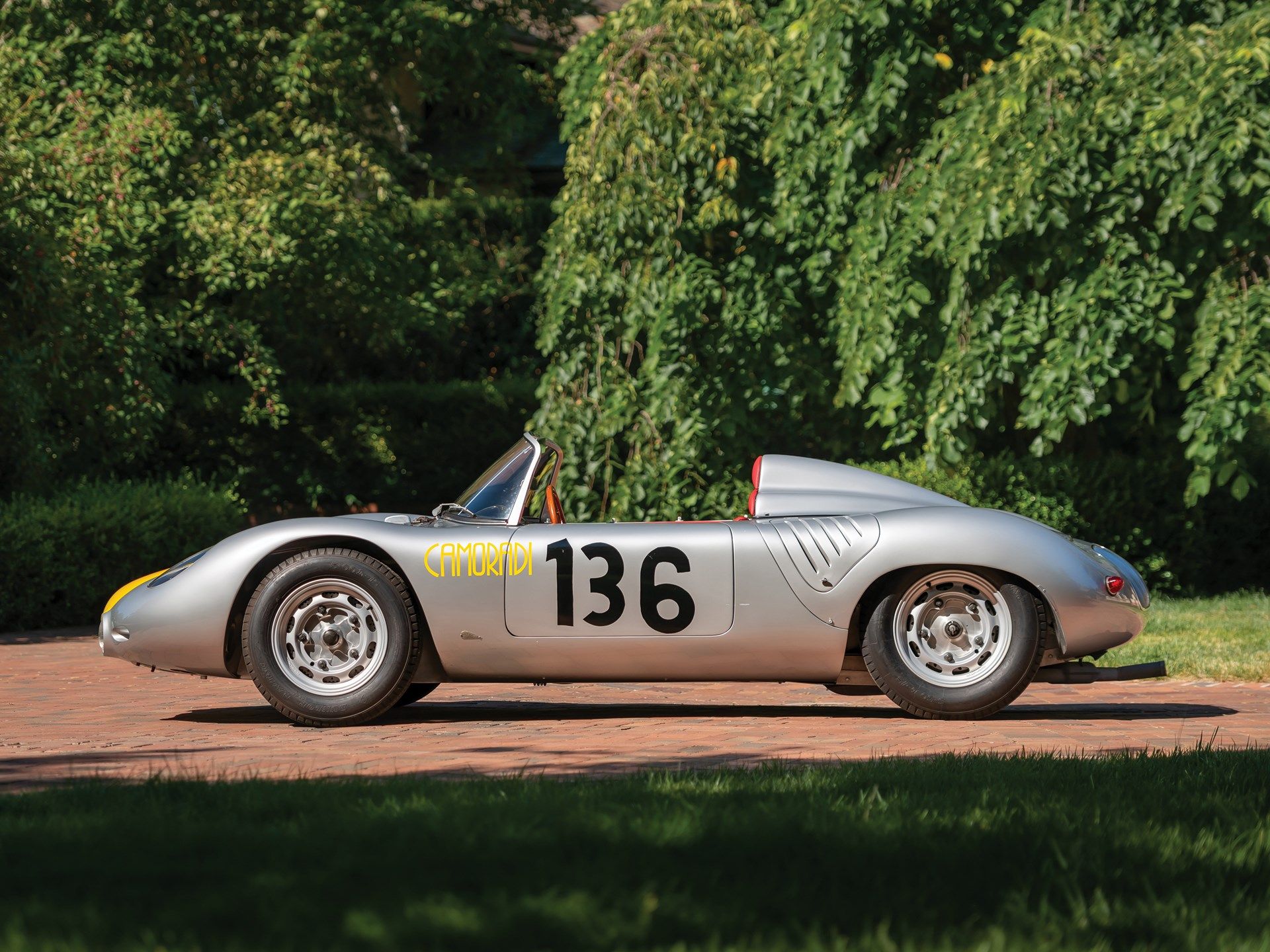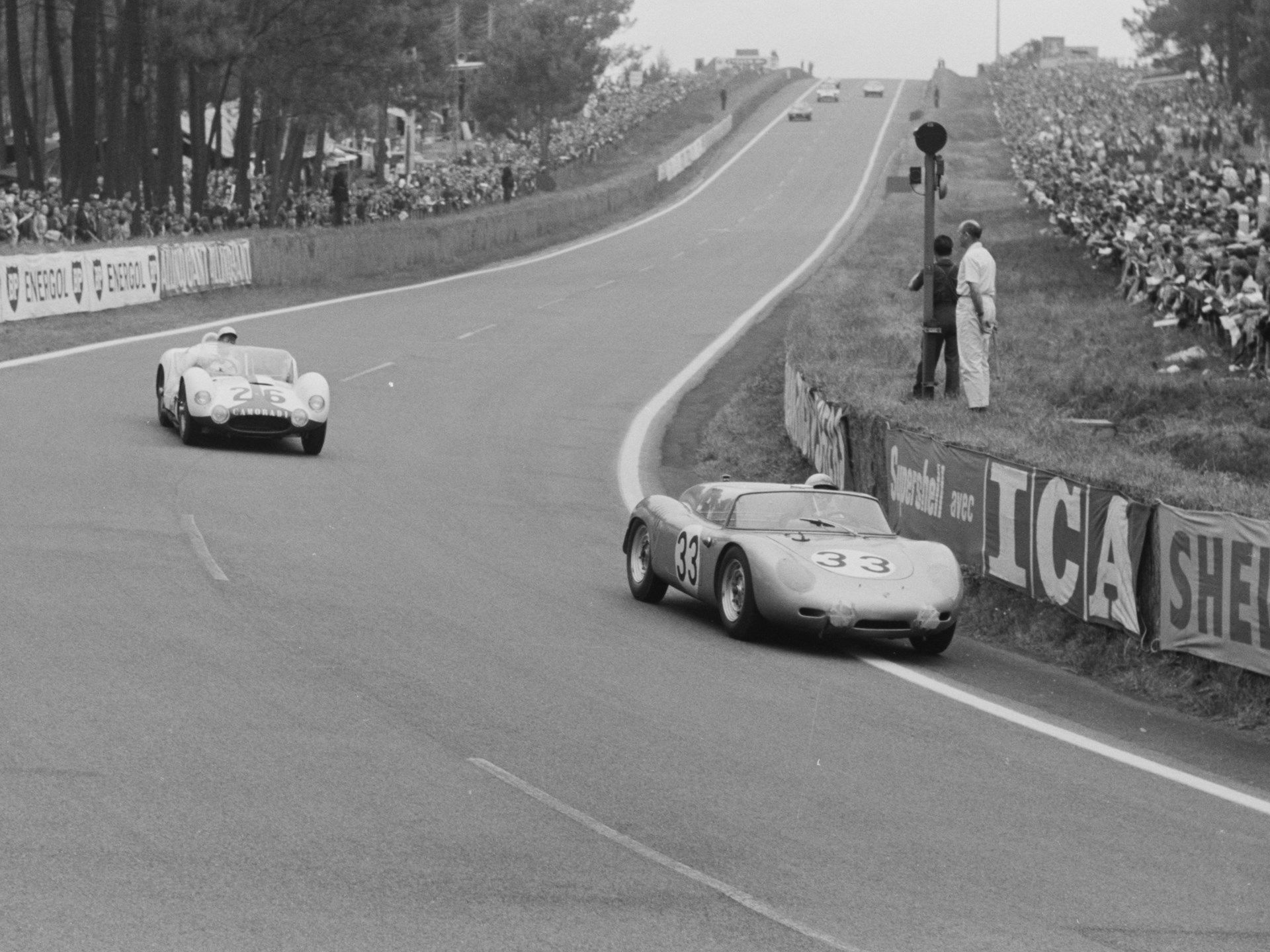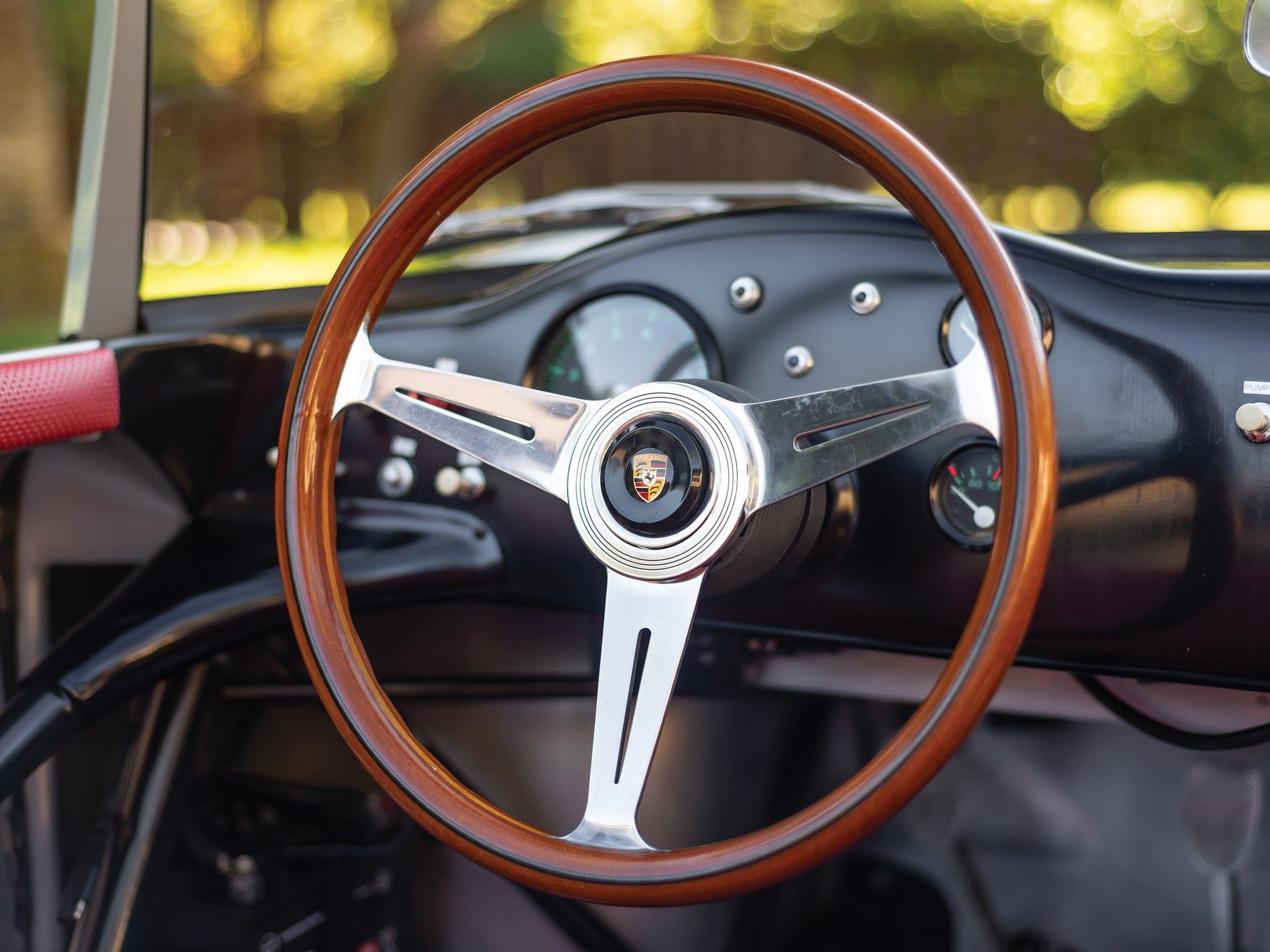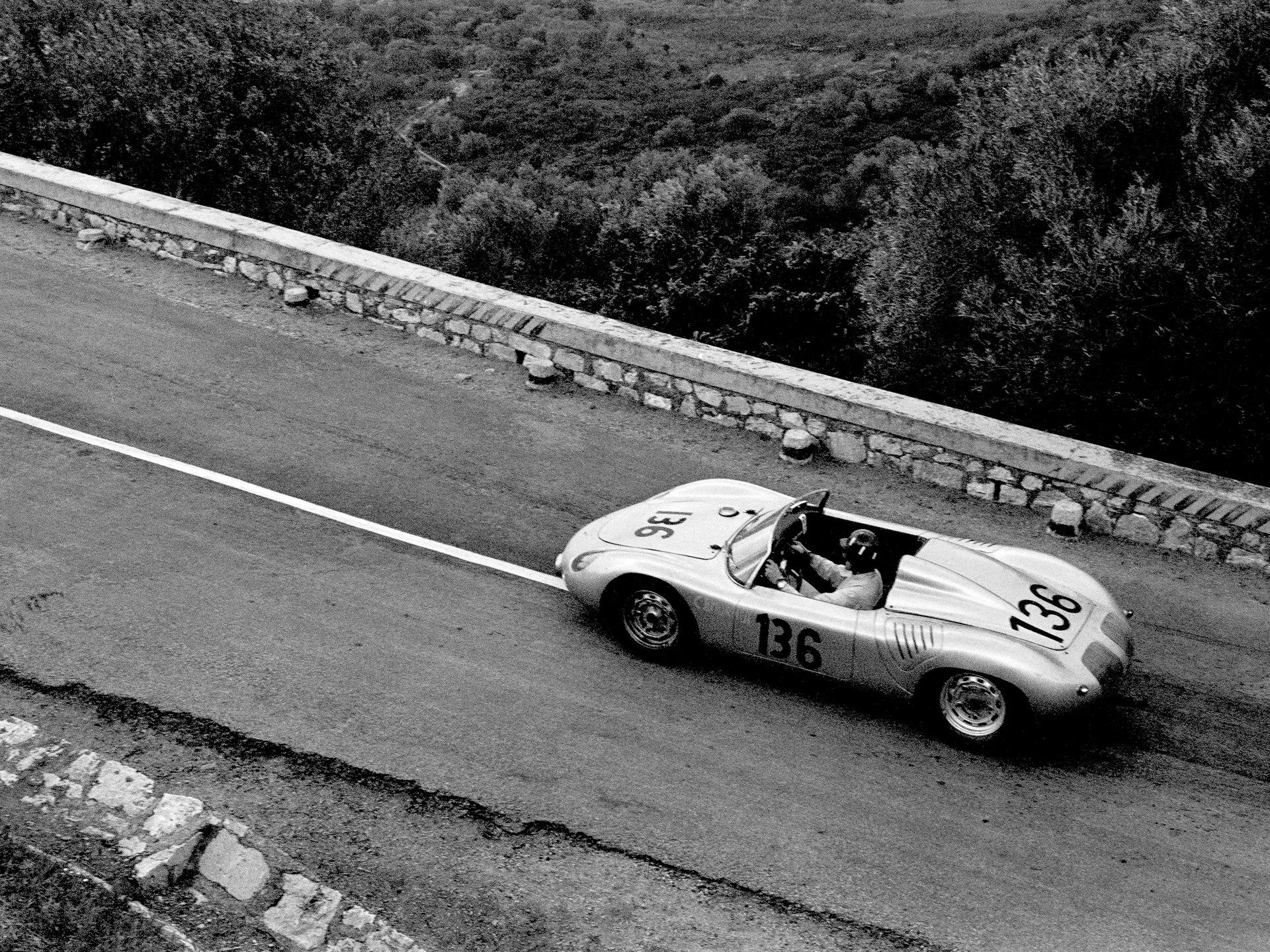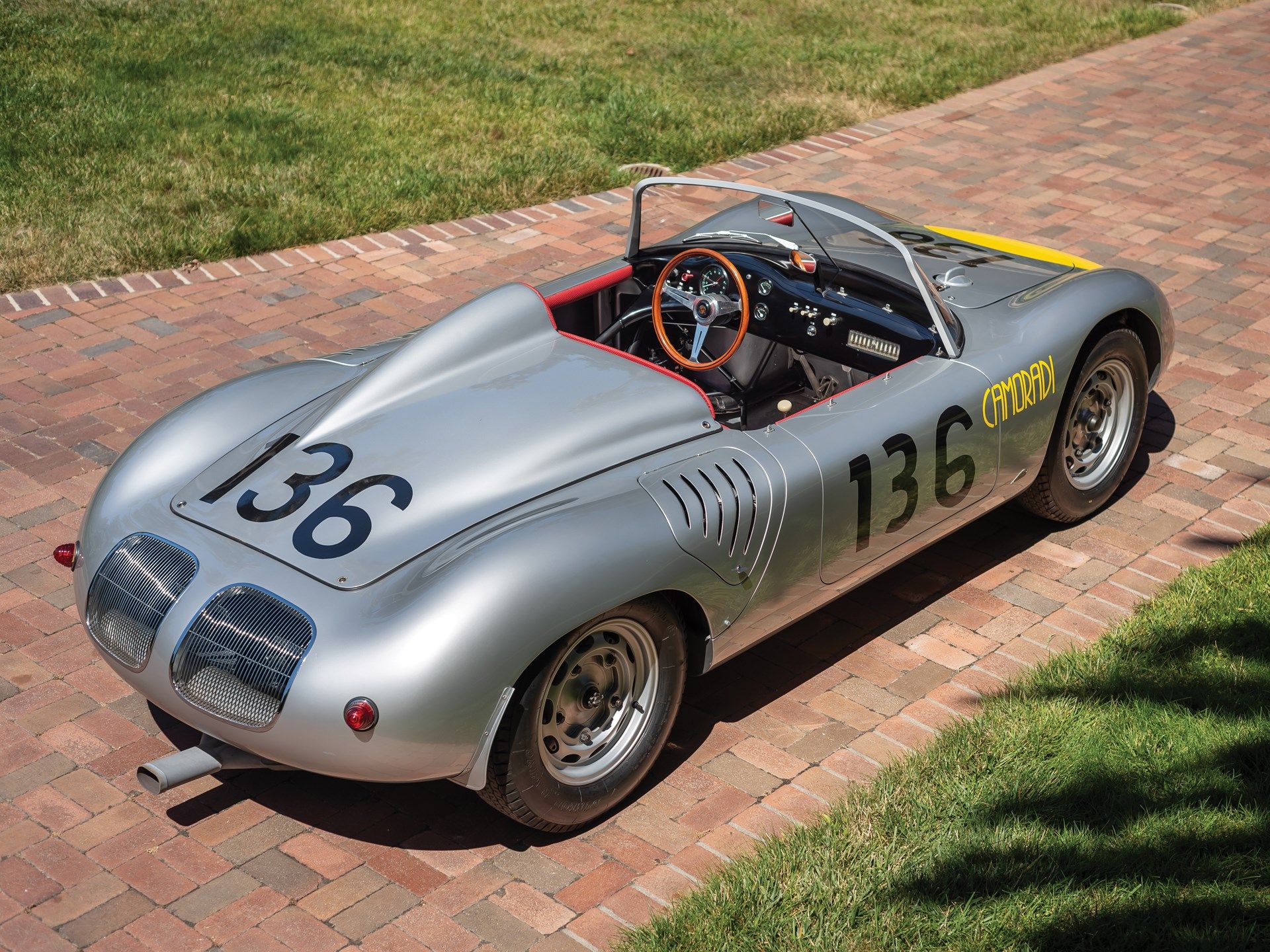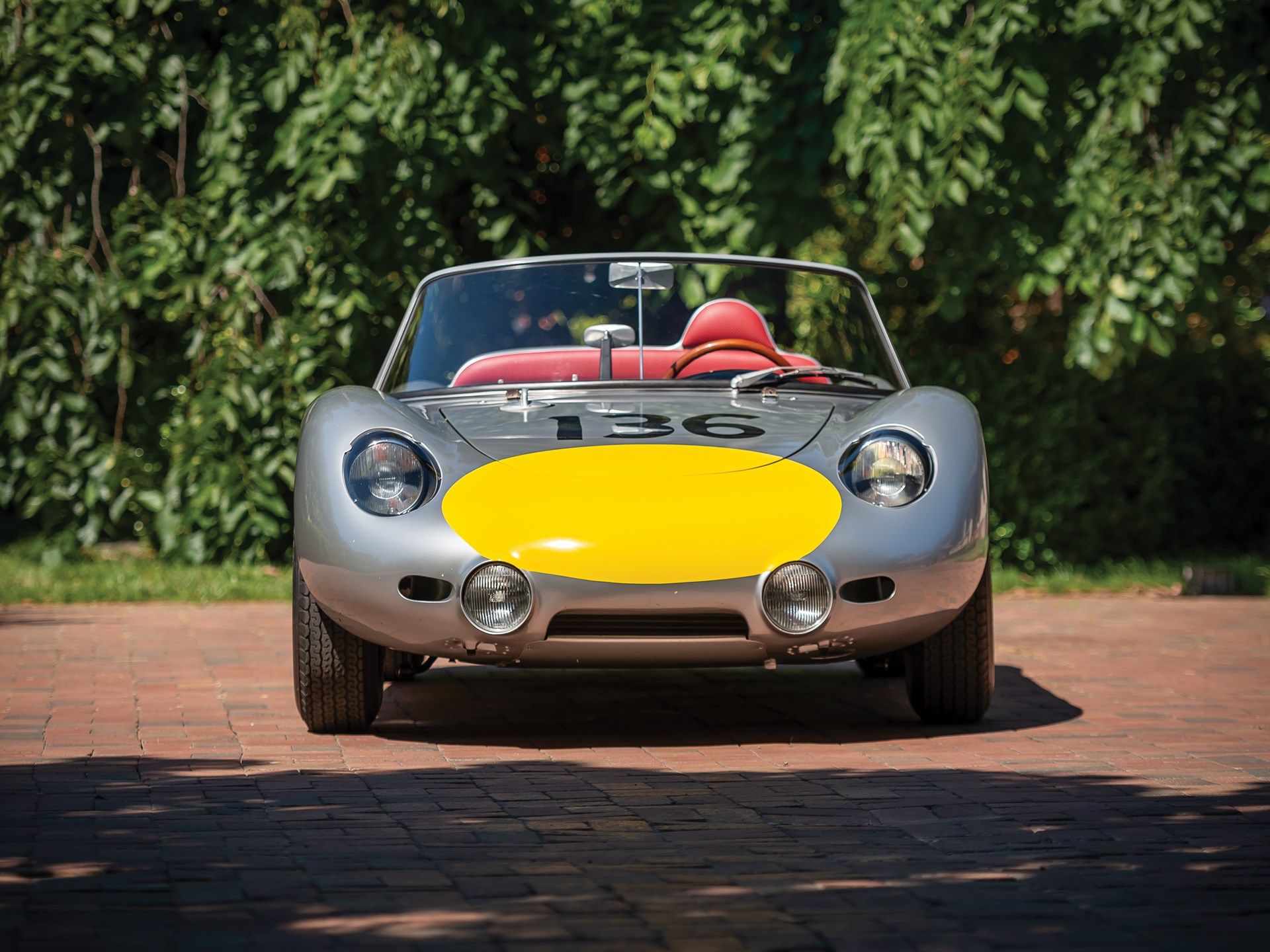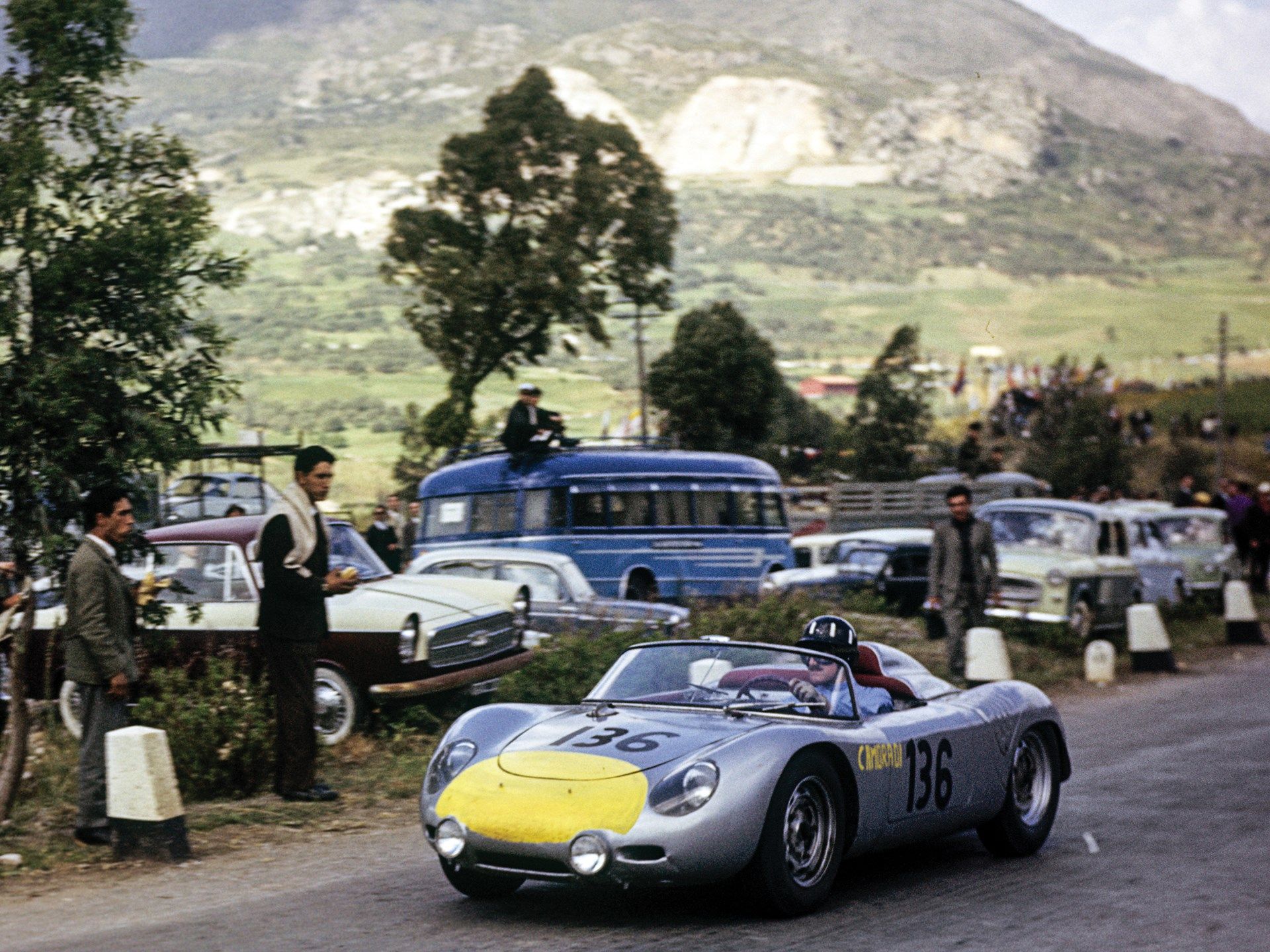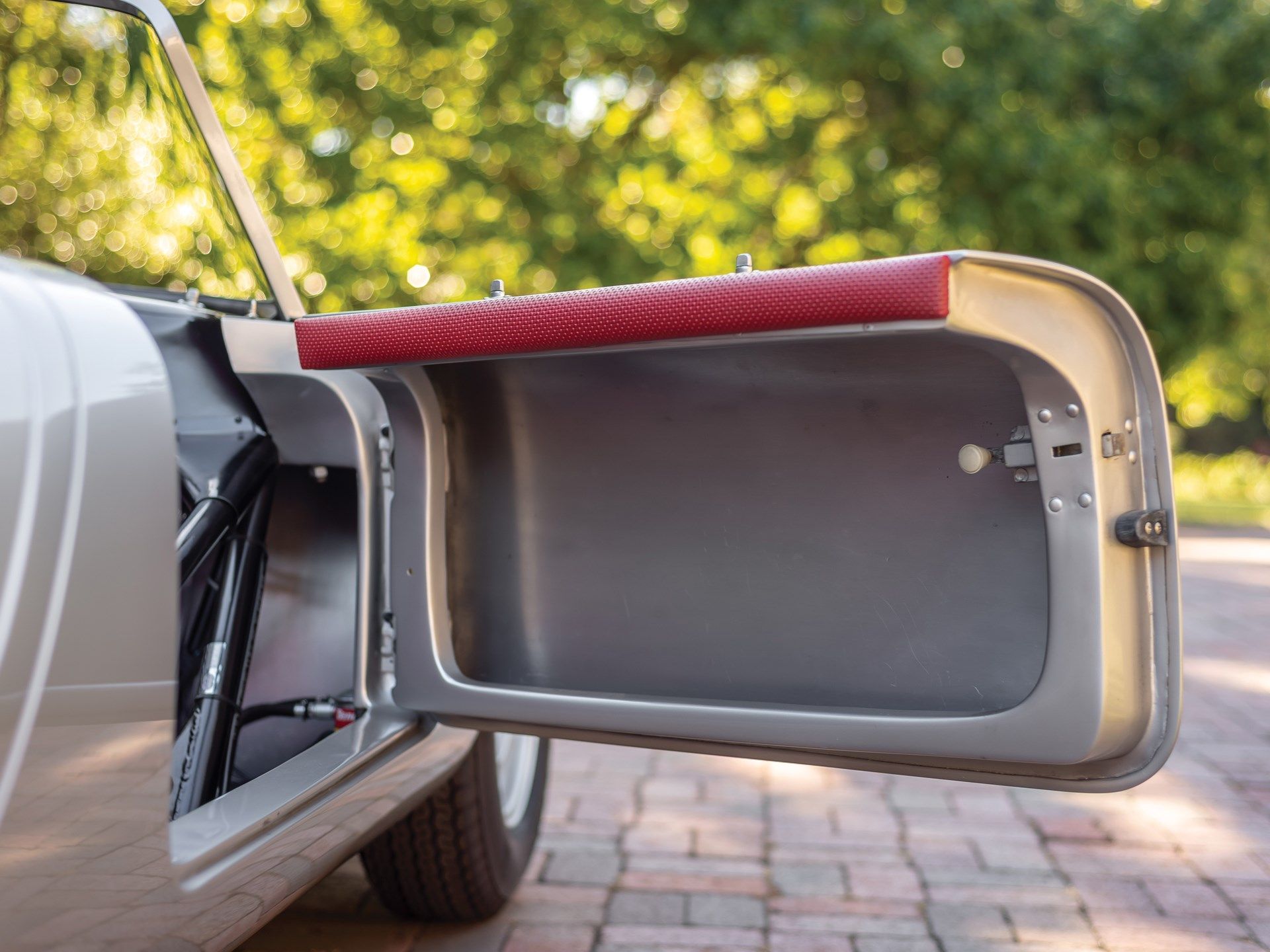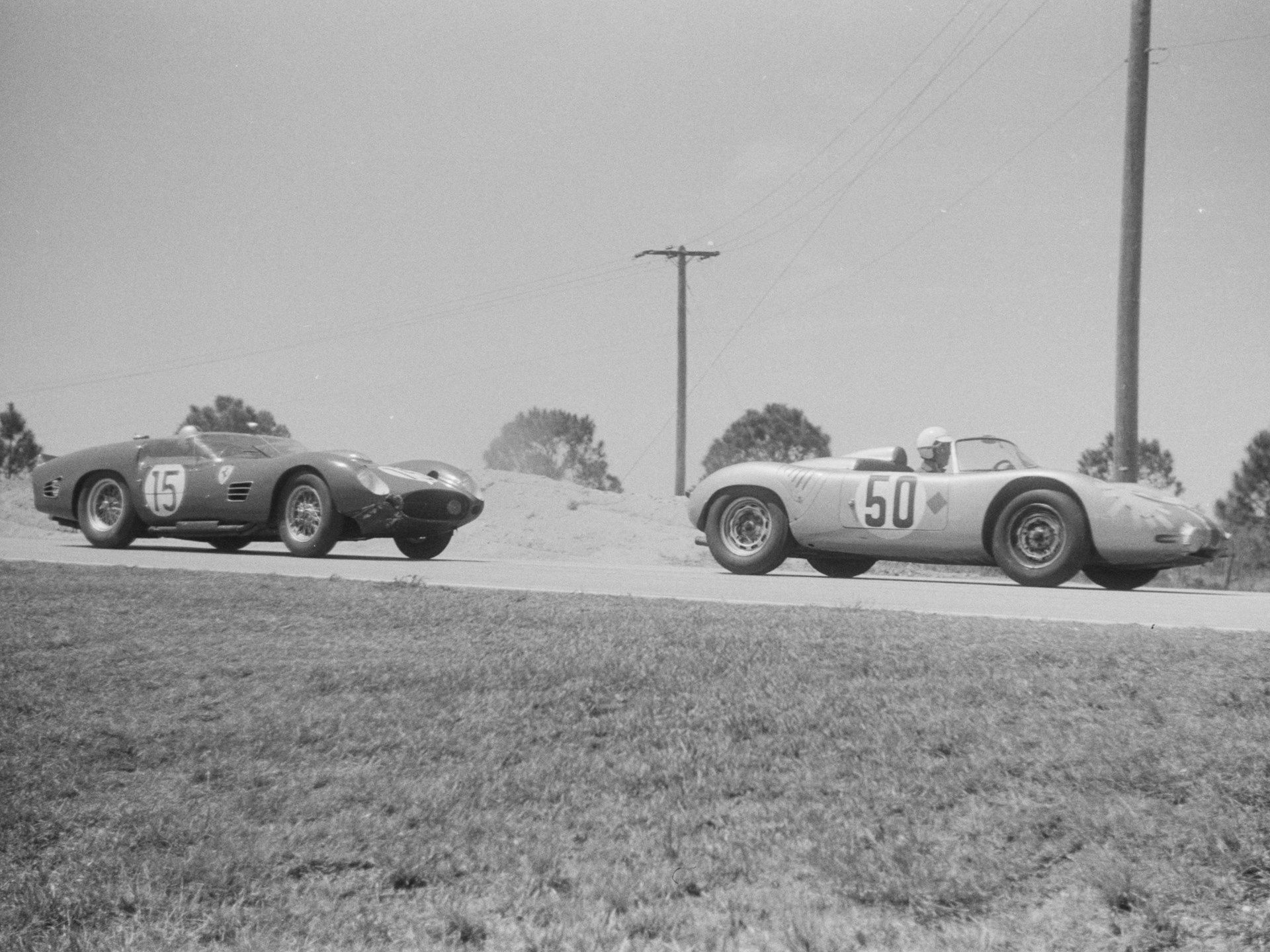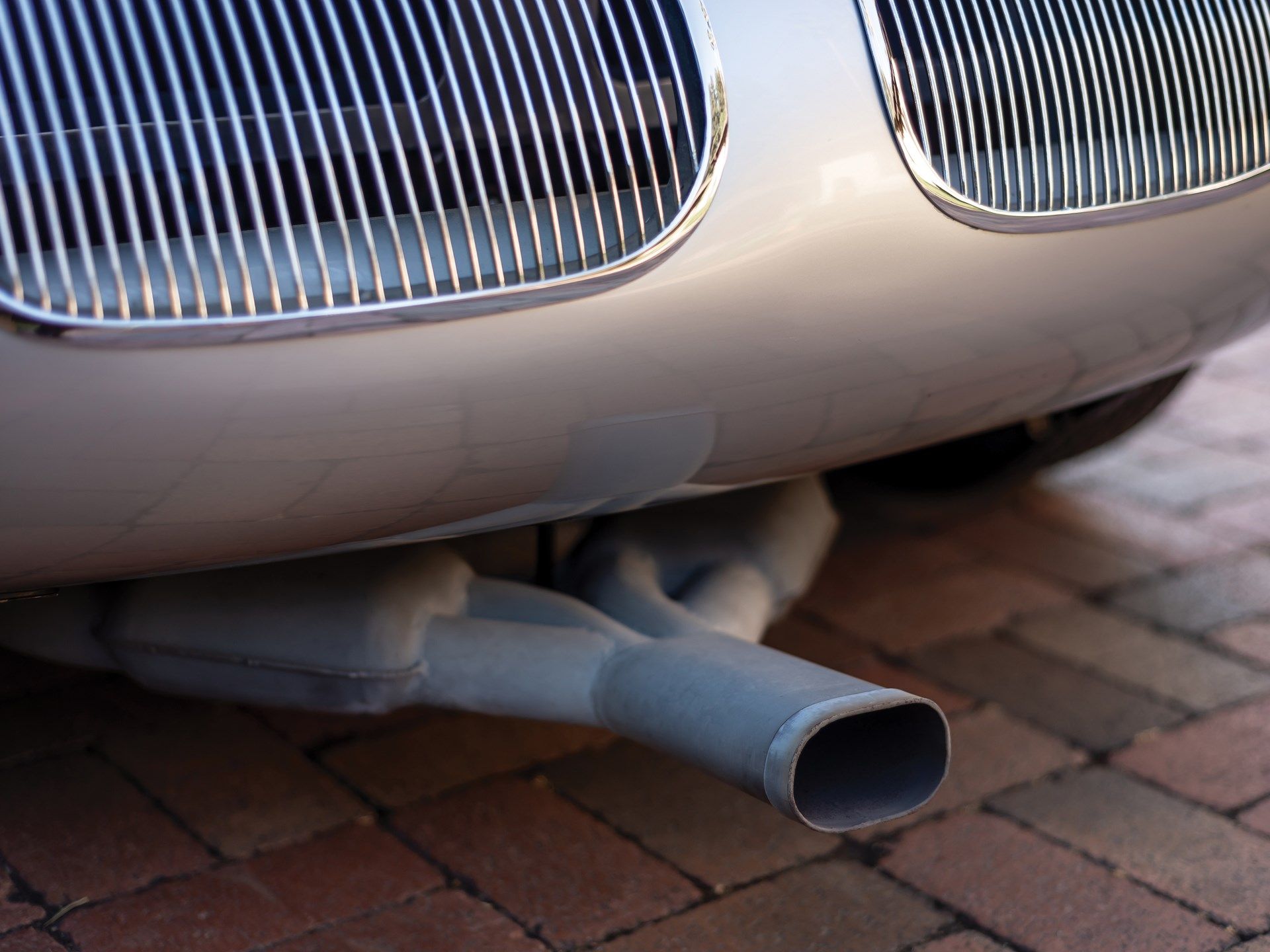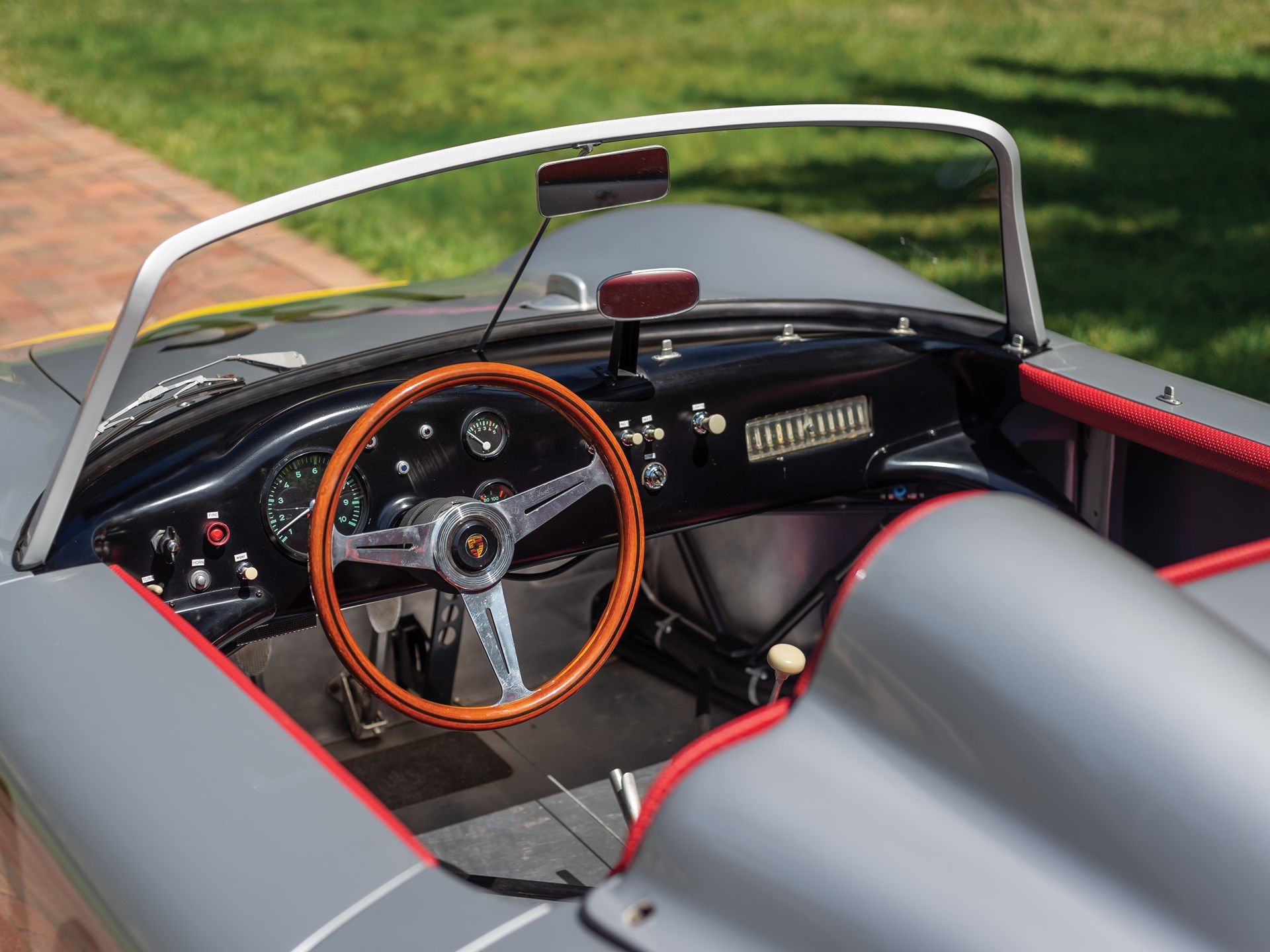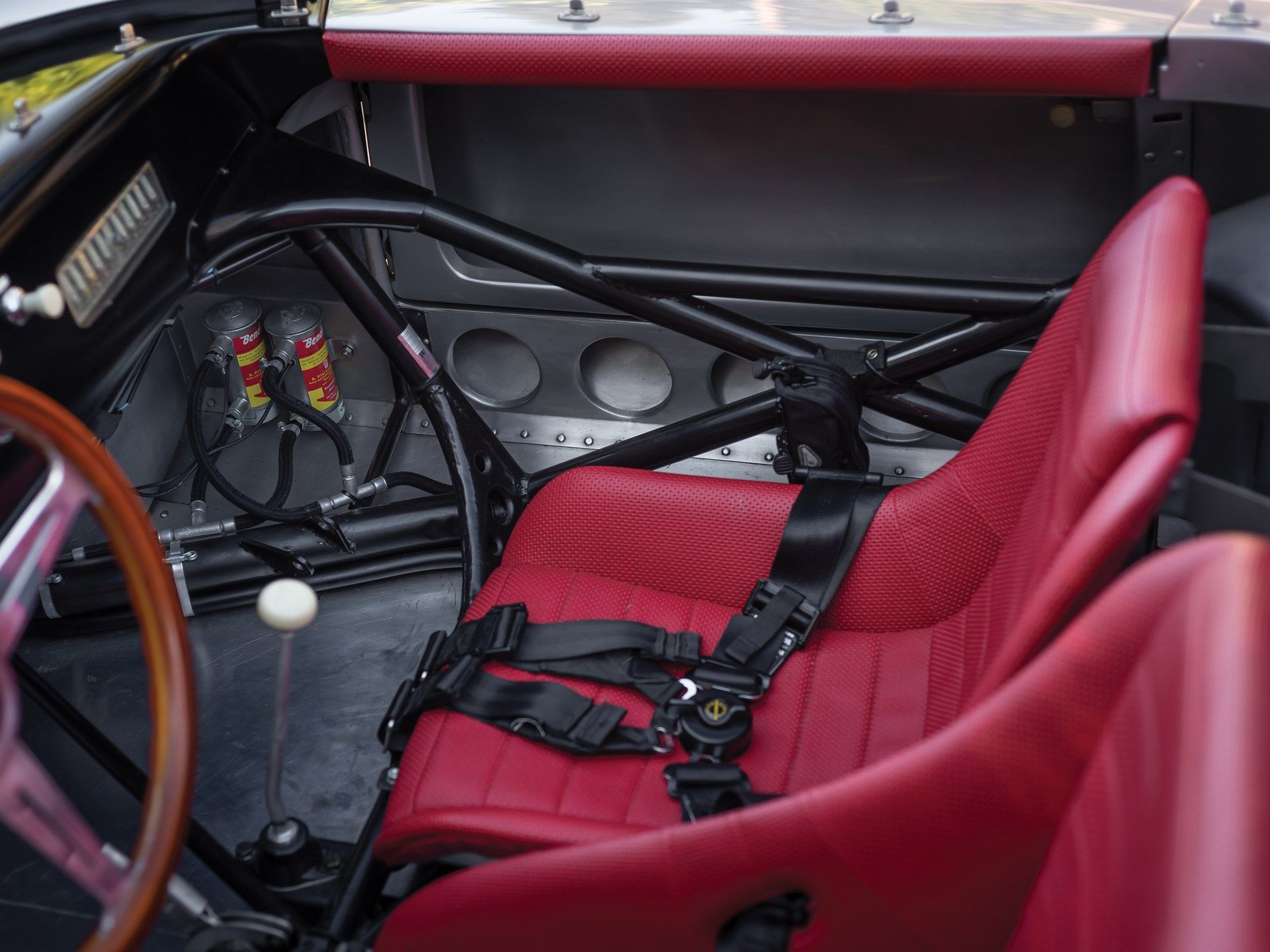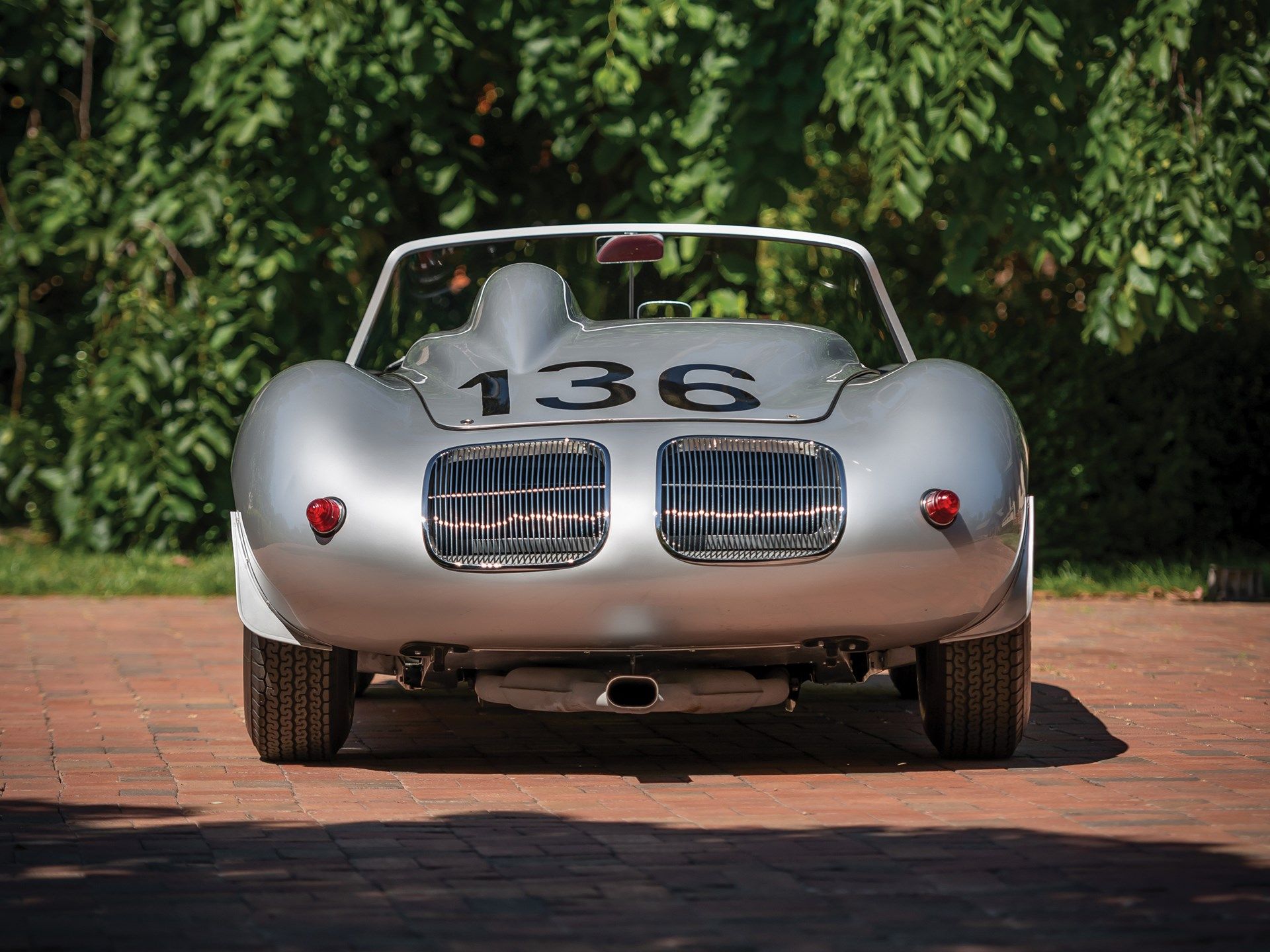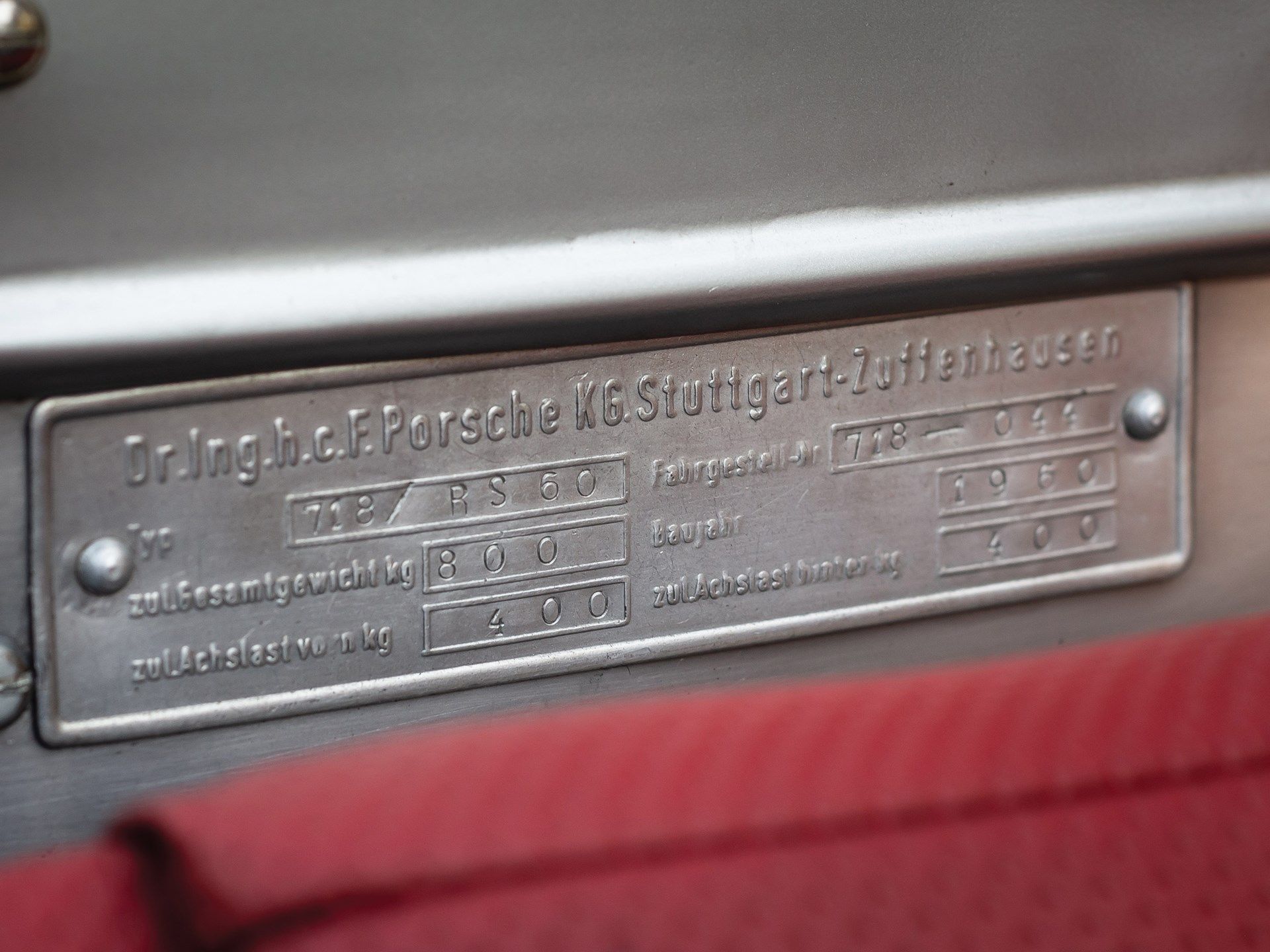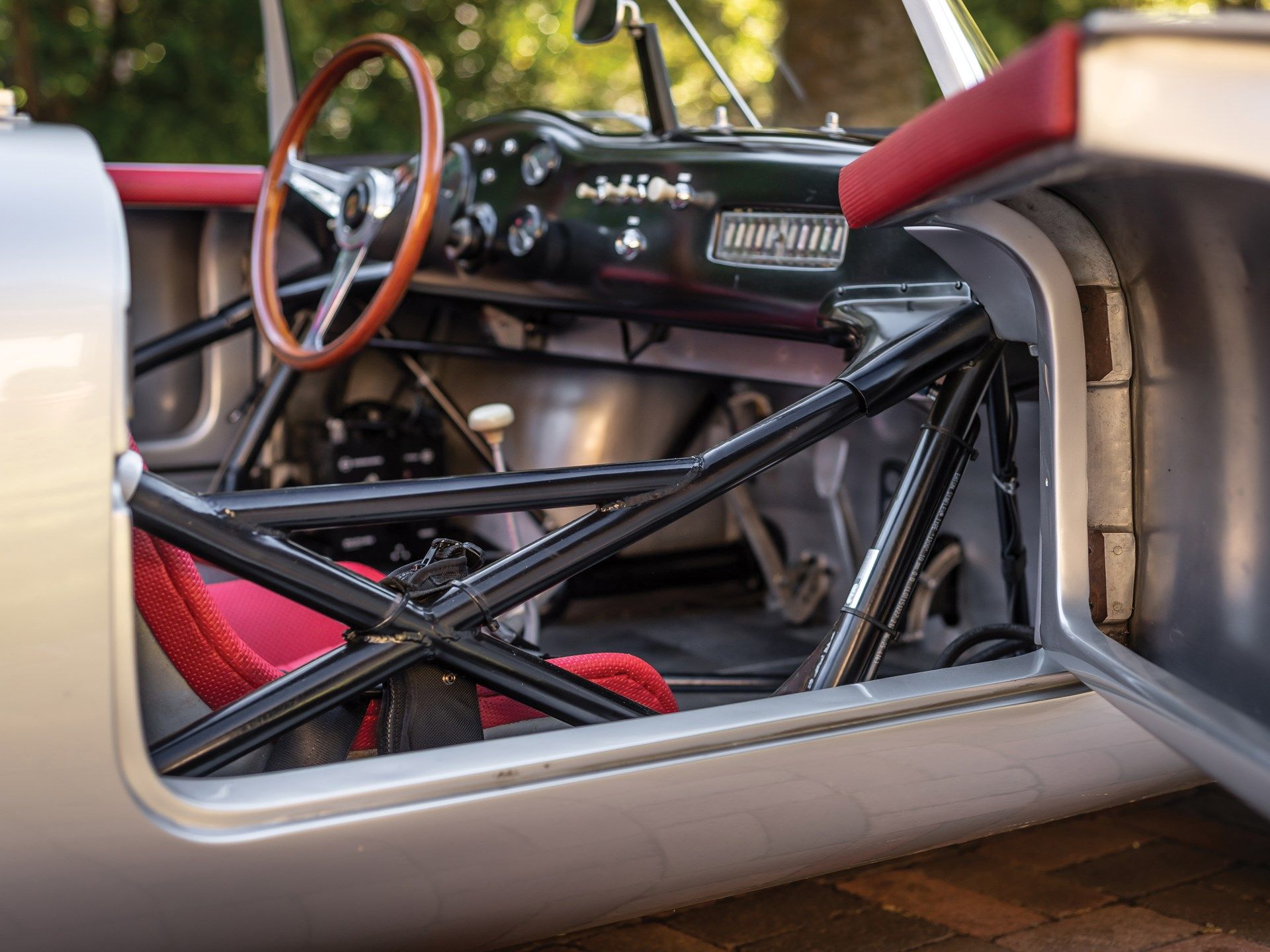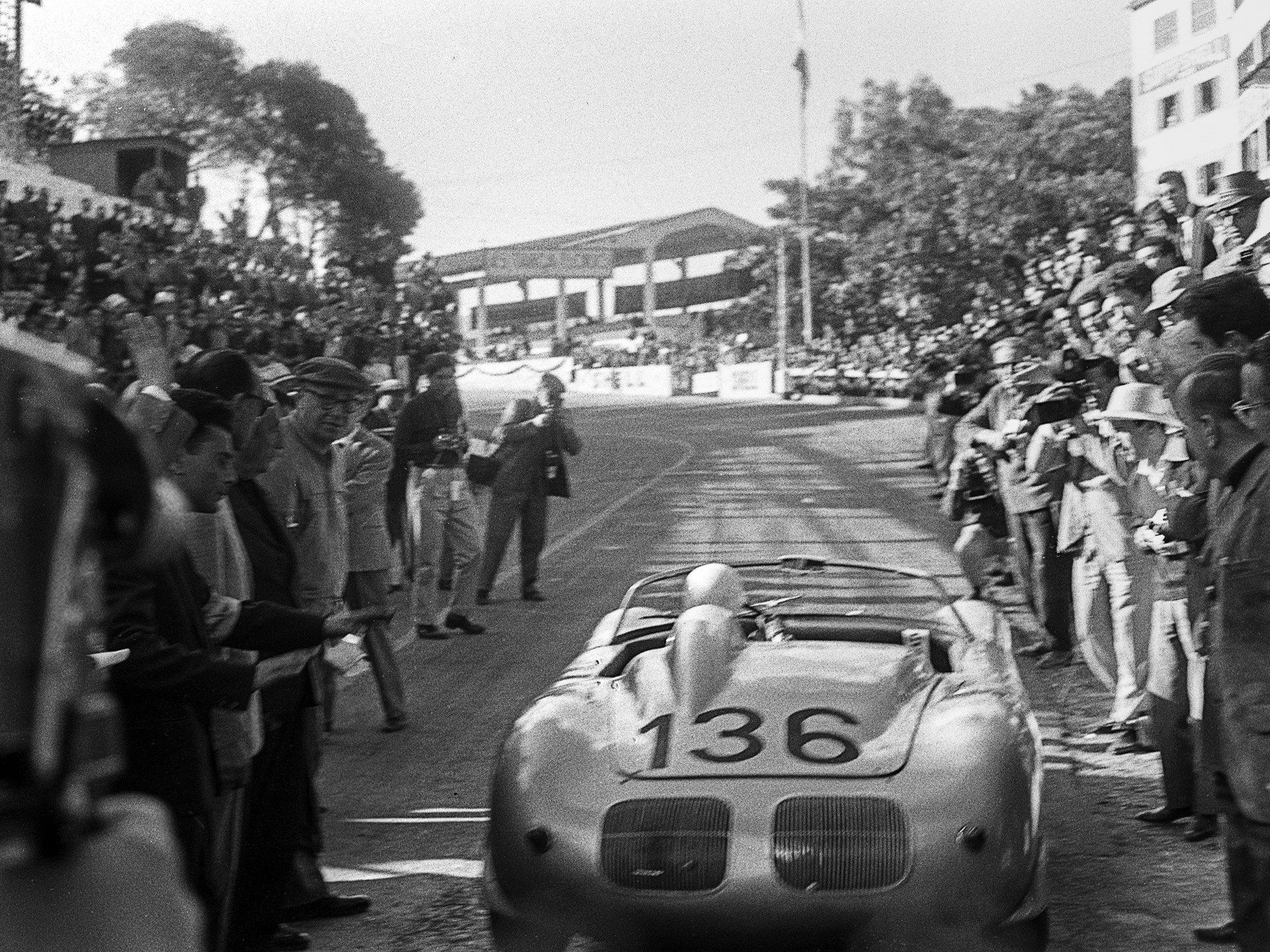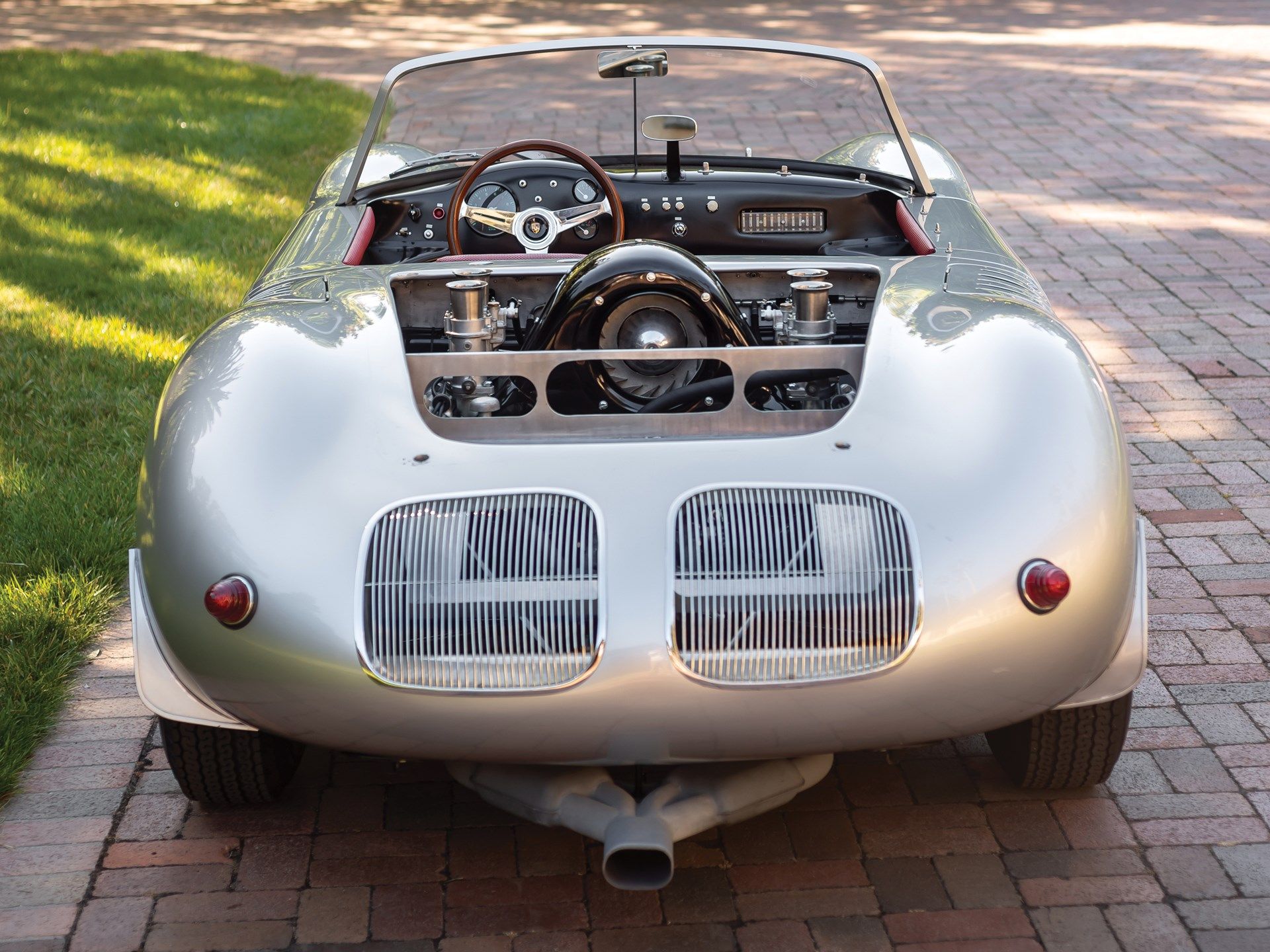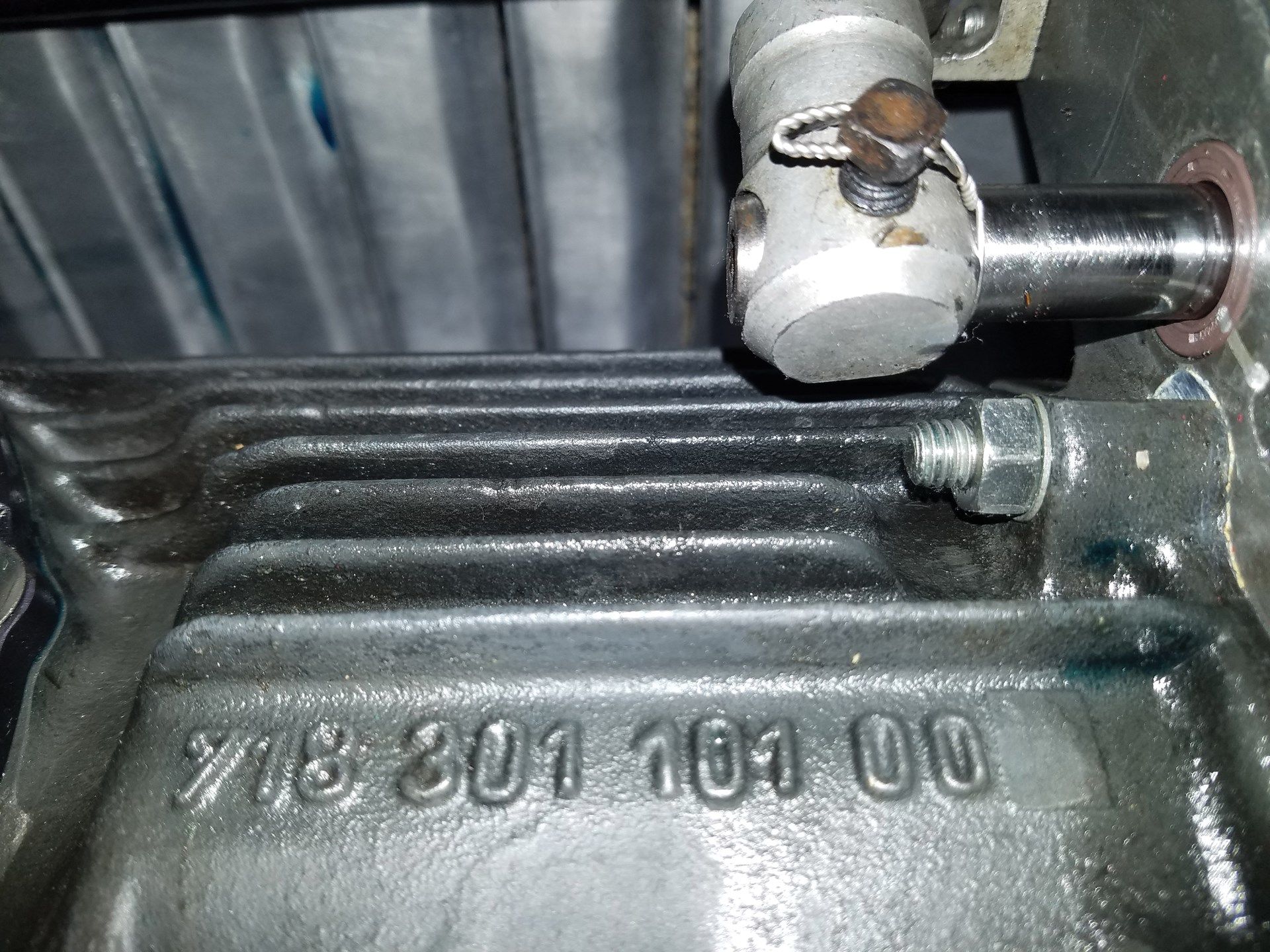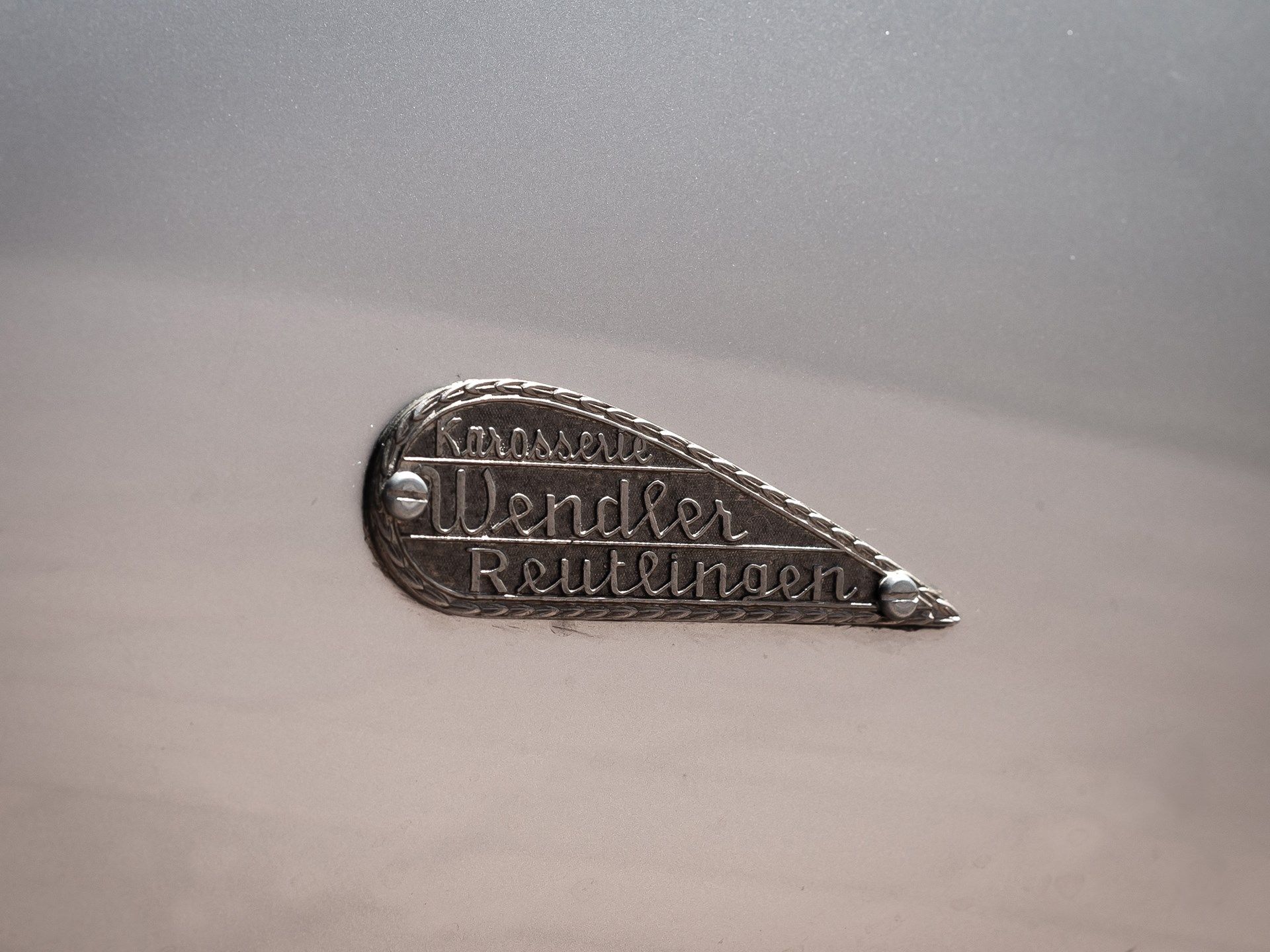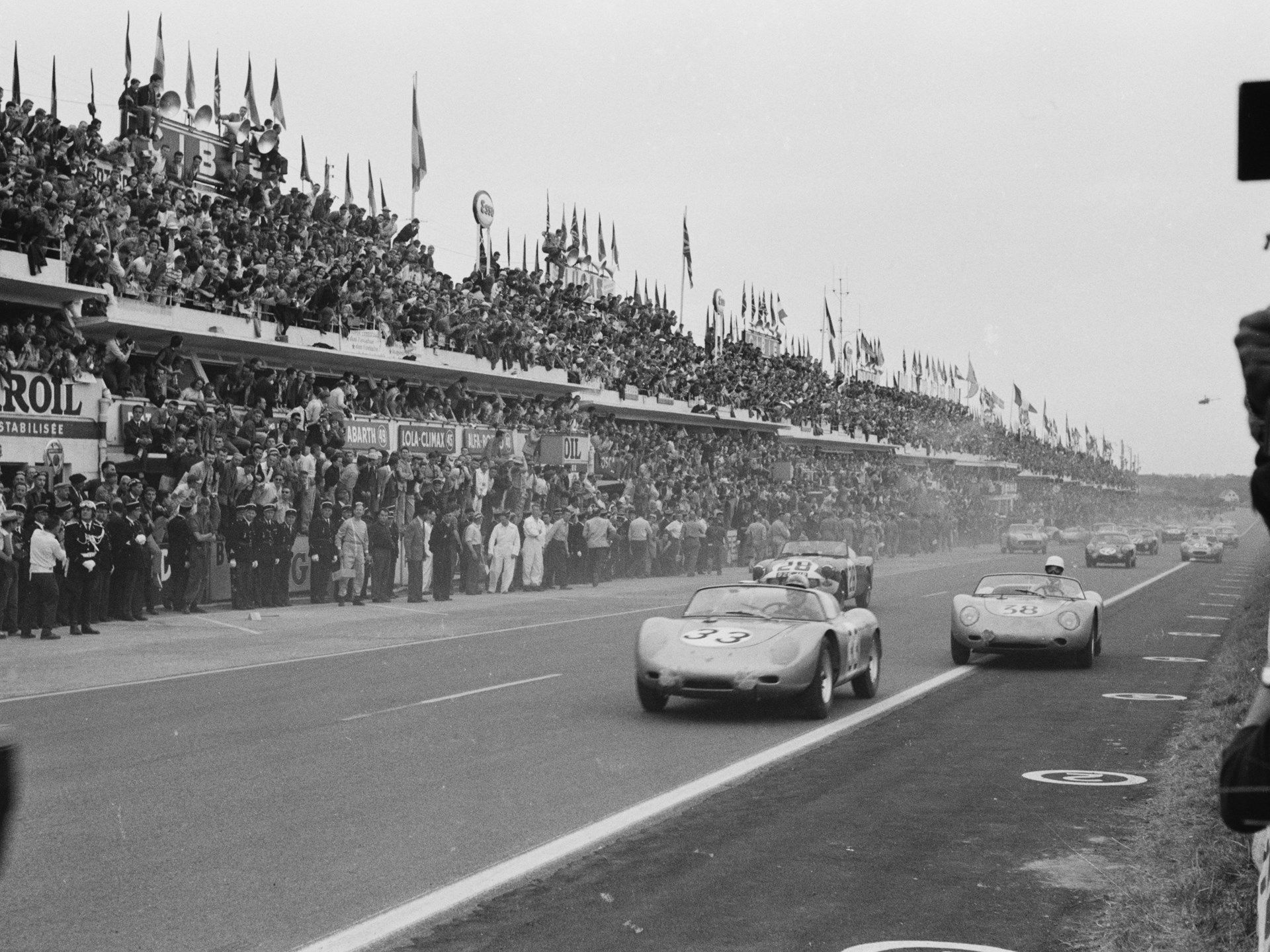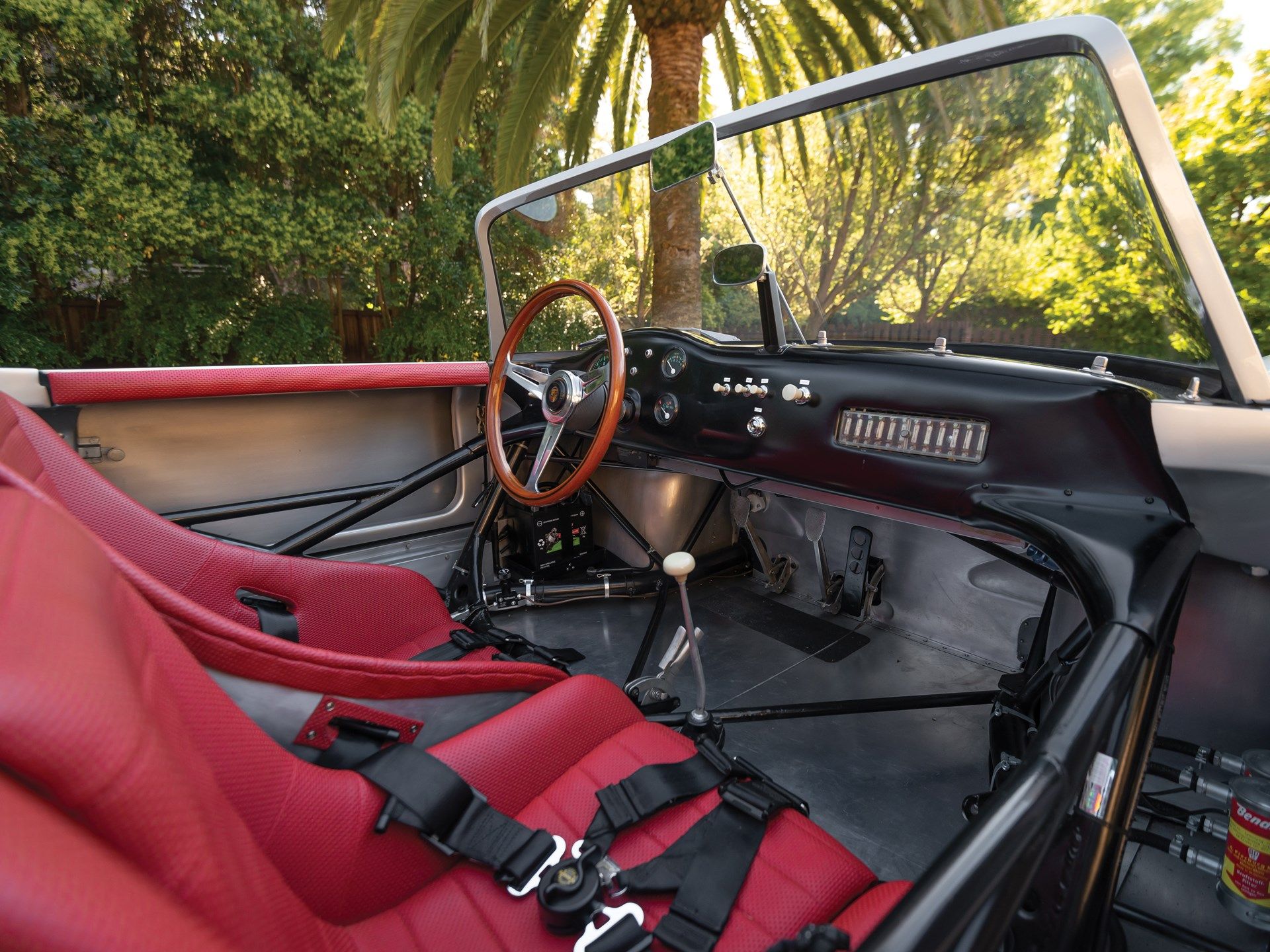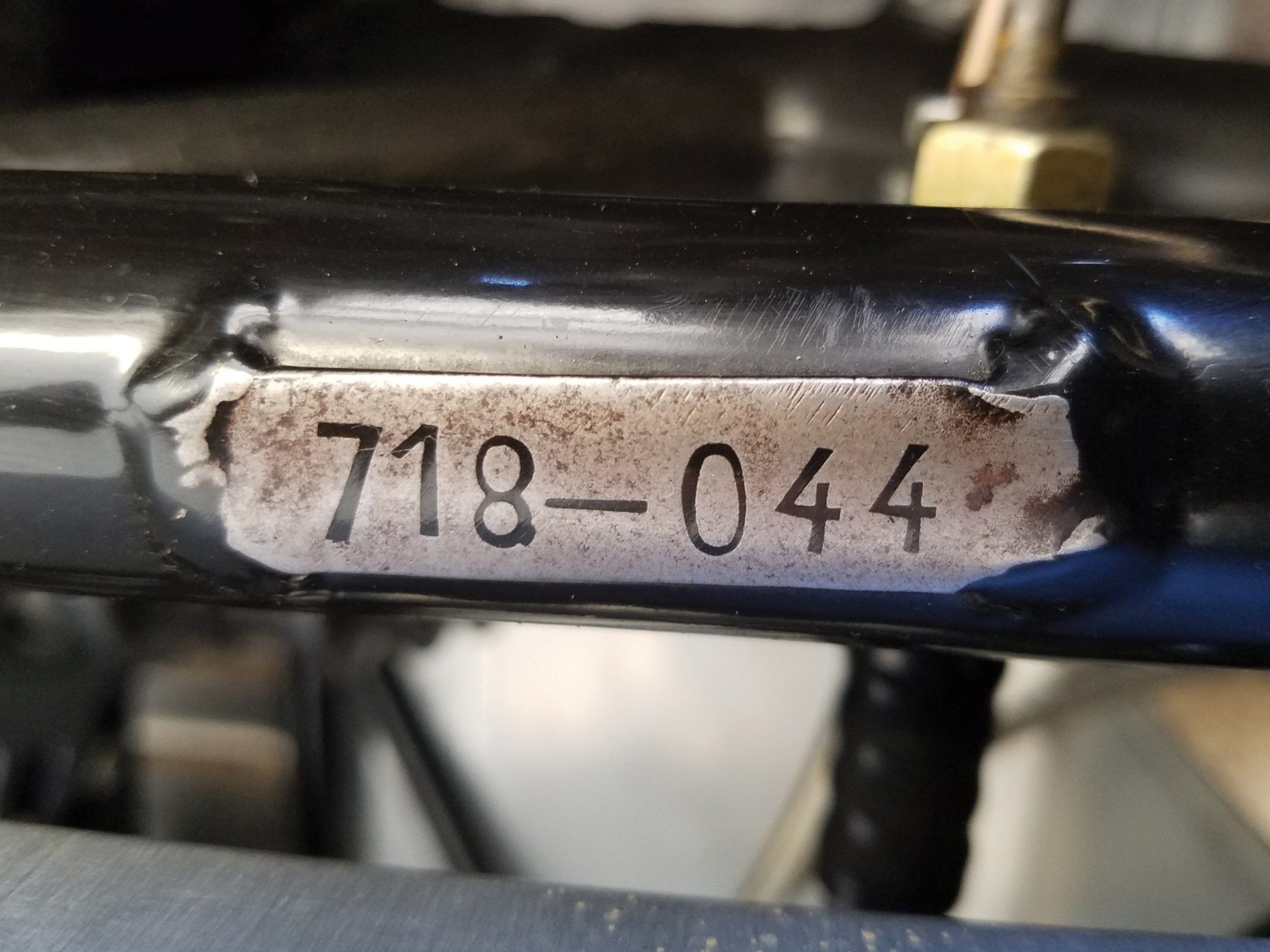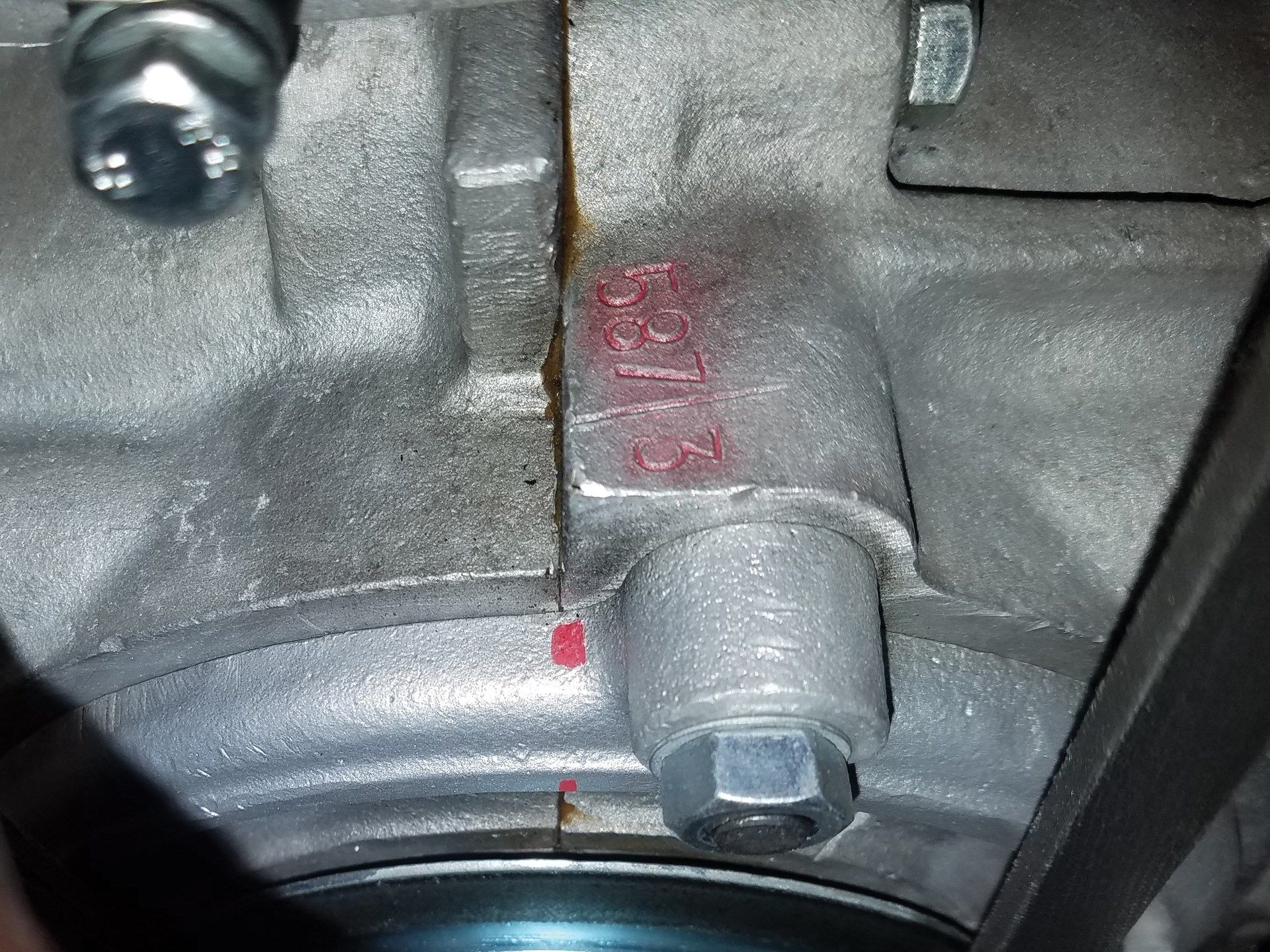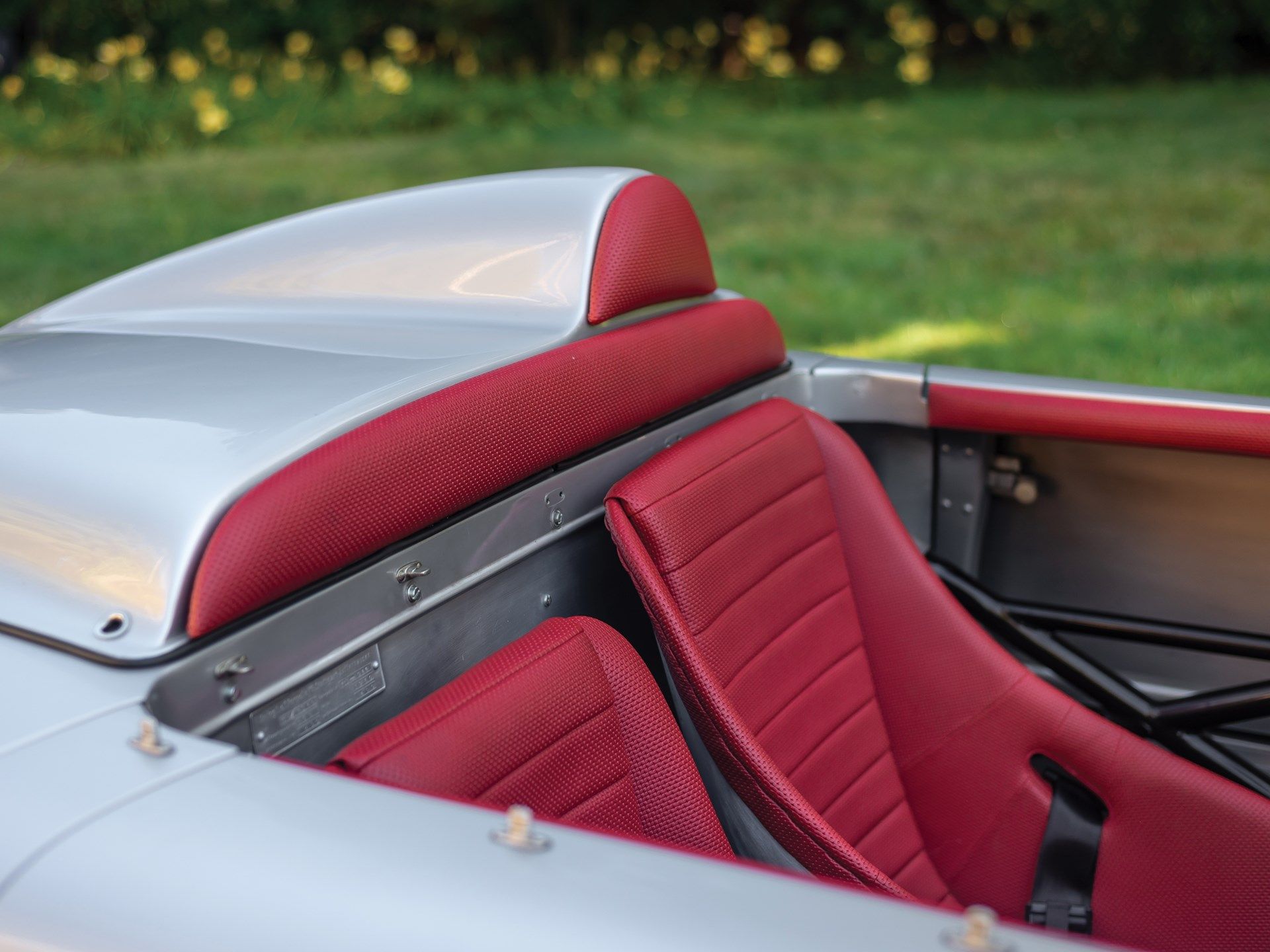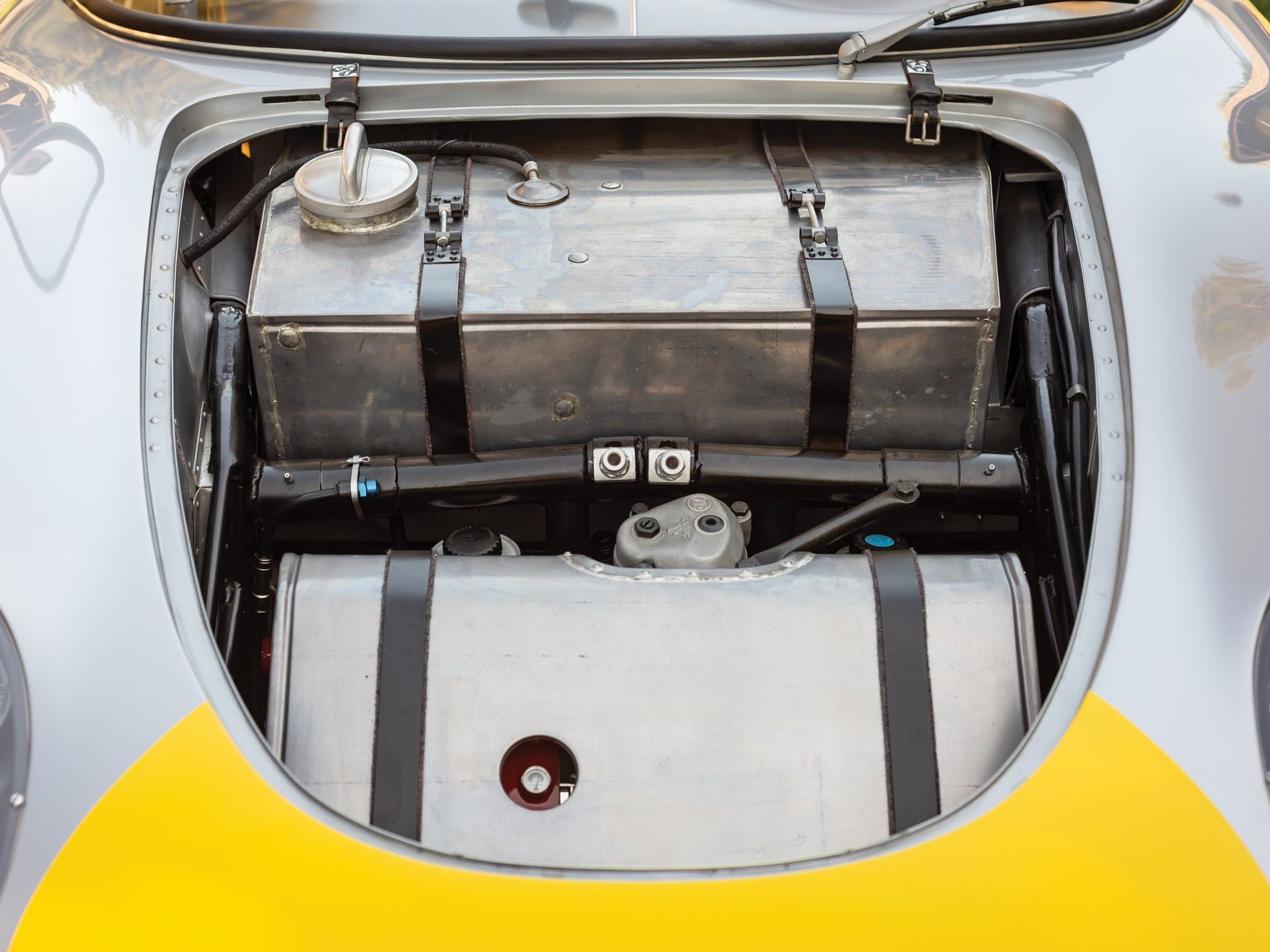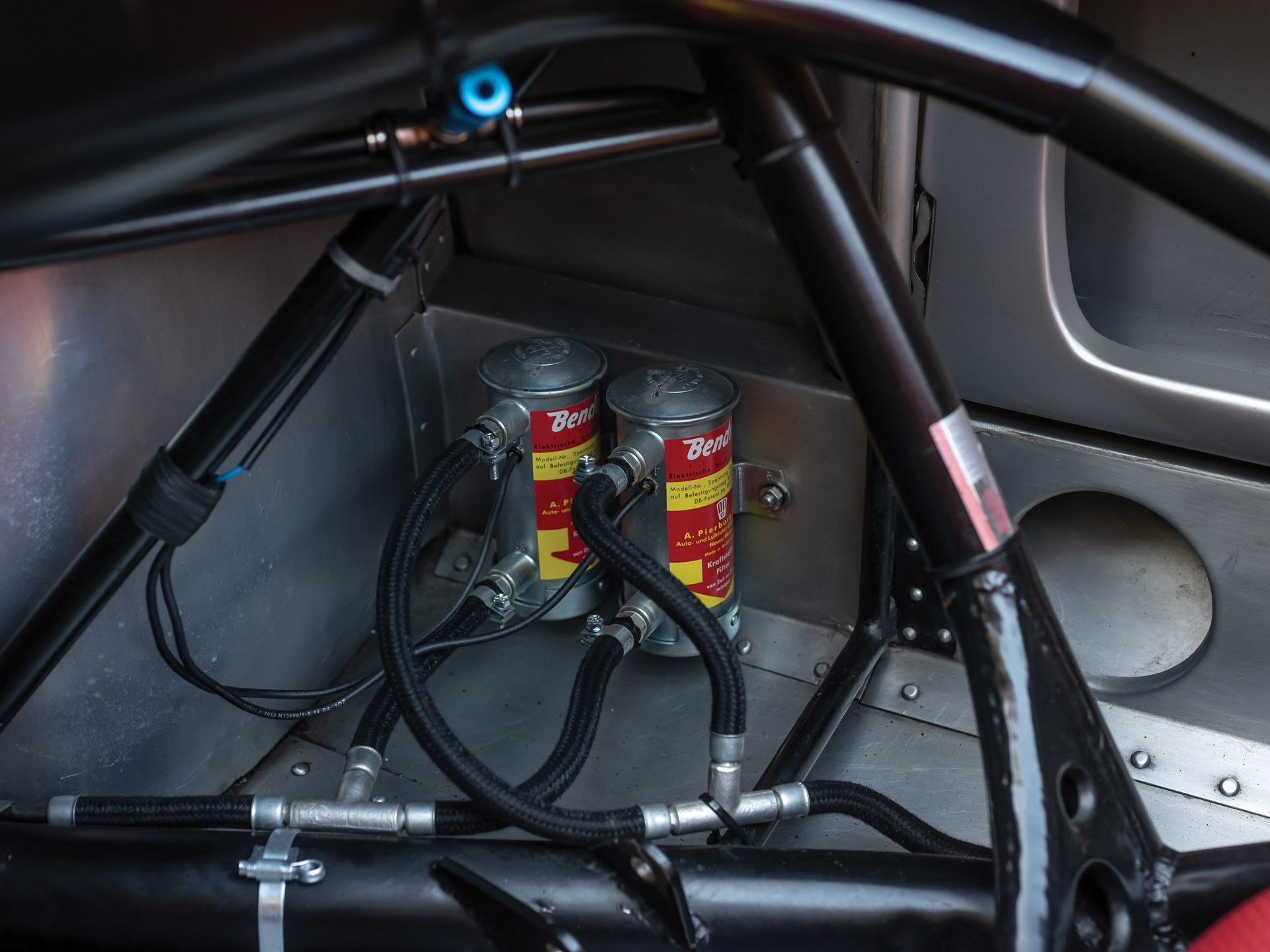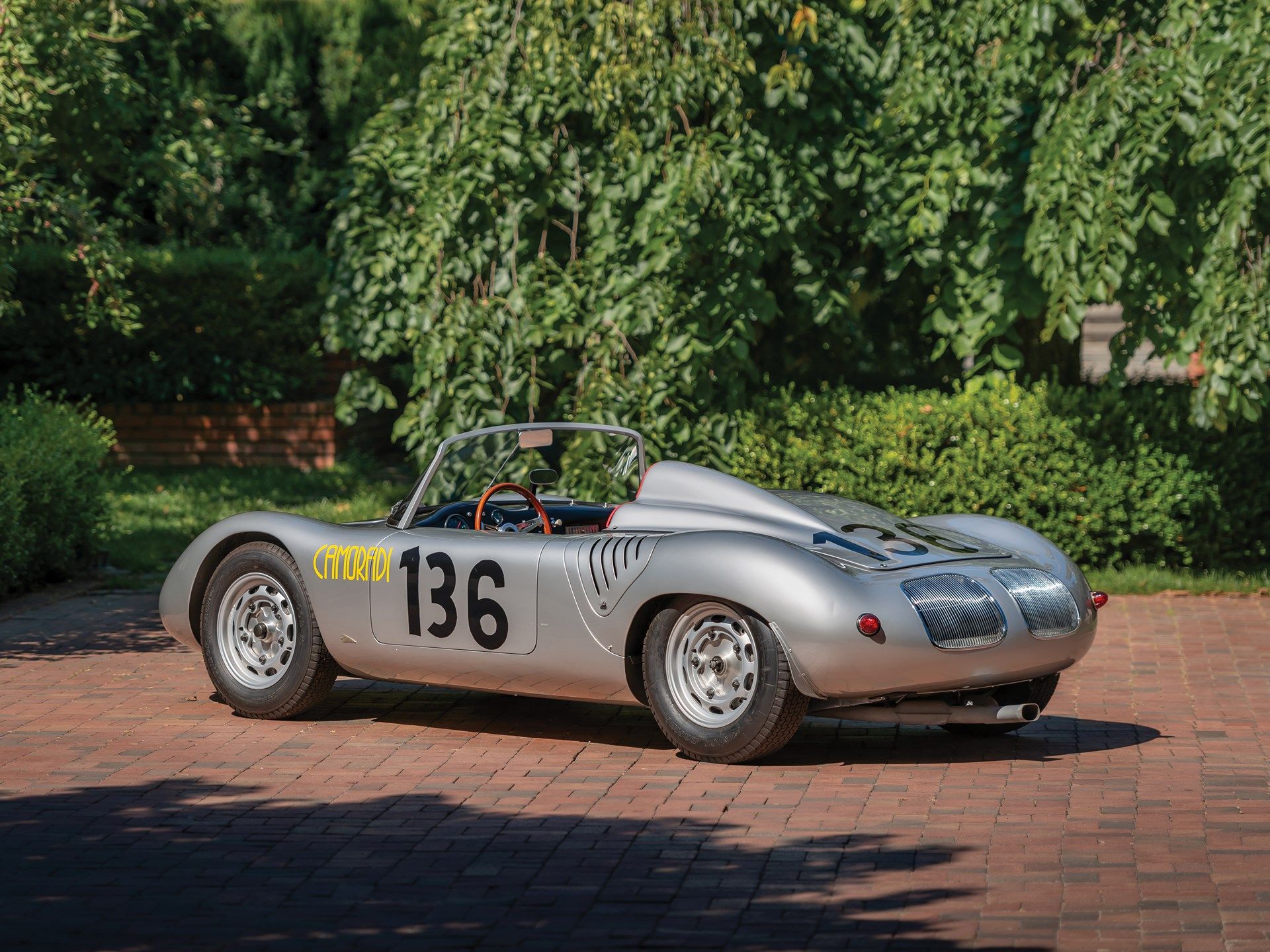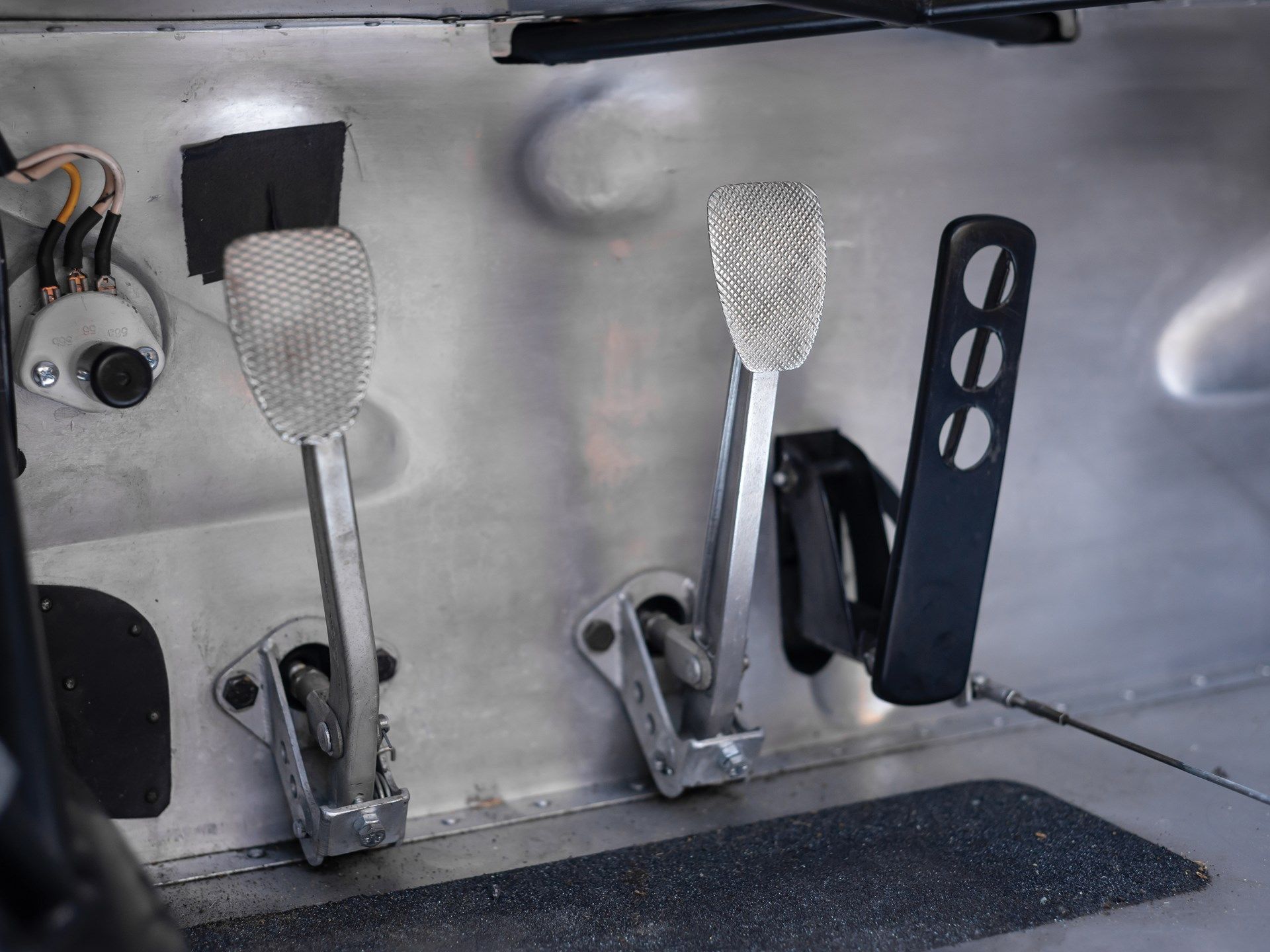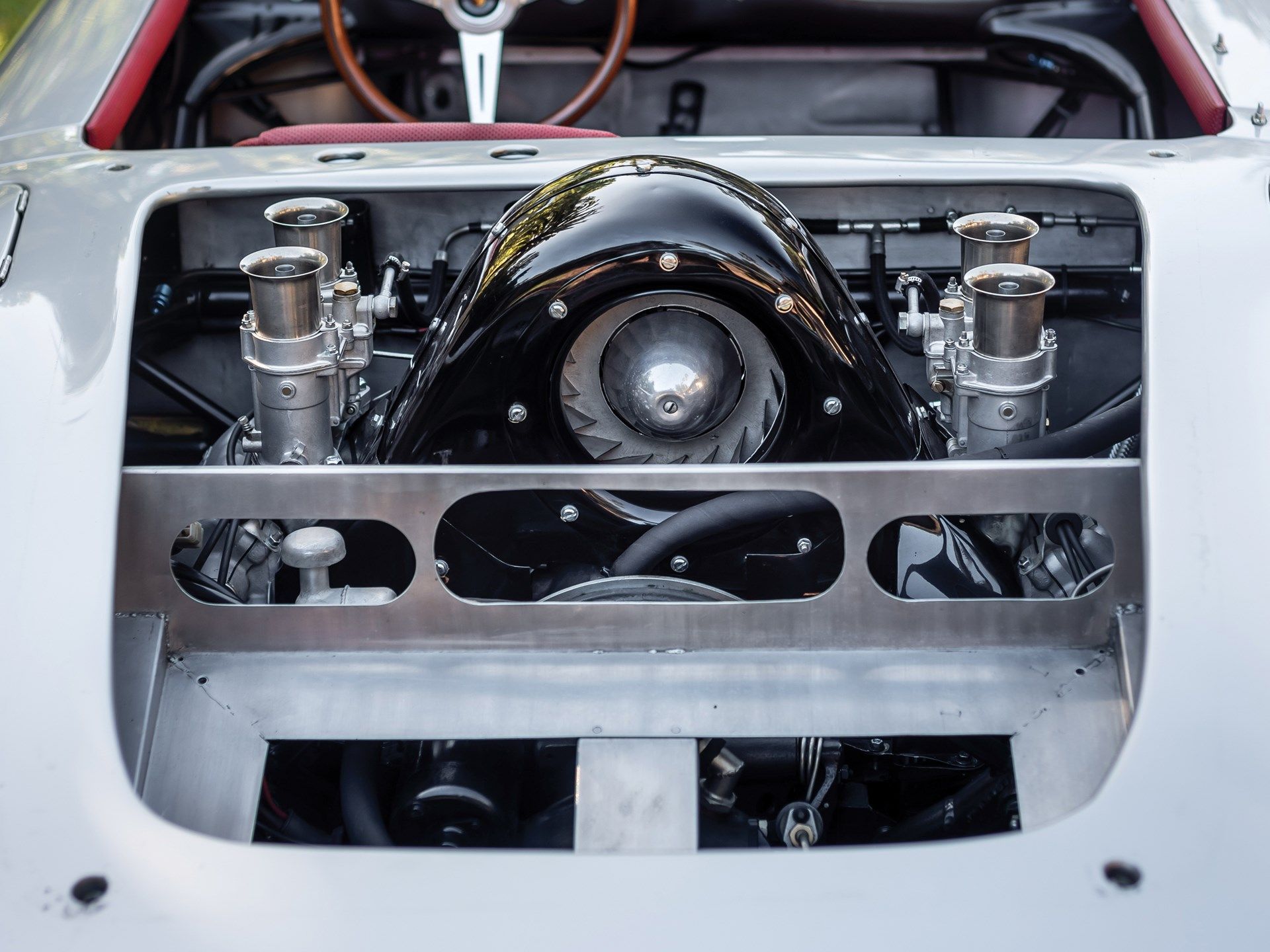How often do you see an ex-works Porsche race car hit the auction block? It rarely happens and this is one of the few that were sold publicly in recent history. This is a 1960 Porsche 718 RS 60, member of the 718 RS family of open-top sports cars built and raced by Zuffenhausen for half a decade beginning with the RSK in 1957. The RS 60 appeared at a time when sports car manufacturers started realizing that mounting the engine behind the cockpit might be beneficial to the performance of the car after witnessing Jack Brabham muscling his way to the title in F1 in 1959. Porsche was already doing it and had been doing it for years, beginning with the 550 Spyder, a car infamous for having an important part to play in actor James Dean's death but one that was, more importantly, a successful car in road racing.
The RS 60 Spyder raced everywhere around the world, following the trek of the World Endurance Championship and, along the way, ticking starts at Le Mans, the Nurburgring, and Targa Florio. Only 18 were built in period and the factory kept for its own use a mere four examples and this, according to RM Sotheby's, was "the only to likely become available". Powered by a four-cam engine - first a 1.6-liter mill and, in 1961, a 2.0-liter one - the car you see in the pictures, chassis #044, doesn't boast with the most enviable of racing records having retired out of both the 1960 24 Hours of Le Mans race and all of the three major races it contested in 1961: the 12 Hours of Sebring, the 1,000-kilometer race at the Nurburgring-Nordschleife and the Targa Florio in Sicily. Having said that, it must be said that the car was fast, taking pole position outright in the Italian road race before being raced extensively by Bob Holbert, father of Porsche legend Al Holbert, an amazing driver in his own right - both behind the wheel of Porsches and, later, Cobras. It is, then, no wonder that chassis #044 sold for over $5.0 million back in mid-August during the Monterey sale. That's one expensive aluminum Spyder!
1960 Porsche 718 RS 60 Werks
- Make: Array
- Model: 1960 Porsche 718 RS 60 Werks
- Segment: Array
- [do not use] Vehicle Model: Array
1960 Porsche 718 RS 60 Werks Exterior
Porsche introduced its first mid-engined thoroughbred race car, the 550 Spyder, in 1953 when it won its class in both the 24 Hours of Le Mans and the Carrera Panamericana. Four years down the road, Porsche launched the 550's replacement named 718 RSK, the 'K' not referring to the short-tail bodywork but to the torsion bar suspension that was used then for the first time on Porsche's aluminum open-top sports cars. The developmental work continued, however, and the 718 was updated a number of times over the next five years with the 718 W/RS still raced by the factory as late as 1964 by which team the 904 had already been introduced.
In the front, the Wilhelm Hild-penned racer (Hild designed the original 718 RSK but much of the design cues have been carried over to the RS 60 with the W/RS of 1961 debuting a more straight-cut appearance with boxier arches) features a face that only broadly resembles that of your usual Porsche 356. That's because the fenders don't rise high up leaving the hood behind to curve down towards the bumper. Instead, the whole frontal surface is almost level with the fenders only minimally curving upwards to make room for the larger rims that were fitted to improve the car's stability.
The front lid is held in place via two leather straps. From the side, you'll notice the rather lengthy front overhangs (compared to the much more stubby 550 Spyder) that flatten towards the leading edge of the car, making it more slippery as it travels at speed through the air. Aft of the front wheel arches you can see the name 'Camoradi' that you'd rather associate with the legendary Maserati Tipo 61 'Birdcage.' Camoradi, which is an abbreviation of 'Casner Motor Racing Division' was the racing team formed by Lloyd 'Lucky' Casner in 1959 to race at Le Mans with Maserati's Tipo 61, a tube-framed sports racer that had been built by Alfieri Maserati although the company was near bankruptcy.
The racing number can also be seen on the handle-free doors and on the engine hood. The RS 60's profile is simplicity in itself with little to point out besides the added vents placed just behind the doors atop the rear fenders. The vents actually face towards the rear. The rear wheel arches are actually flattened with a part of the rear wheels being hidden by the rear bodywork. The car features one D-Type-esque hump (but without the wing-like element that made the D-Type famous) for the driver. It's not a roll bar in reality as most often the driver's head and helmet would surpass the height of the hump and, as such, we consider it to be more of headrest rather than a safety feature - this is backed by the fact that the hump is padded just like the seats.
From the back, the Porsche sports two tiny taillights placed at a distance from the rectangular cut-outs in the rear bodywork covered by grilles with vertical, chromed bars (and one horizontal bar towards the top for rigidity). These two vents with curved edges are placed below the engine's lid. This example features a single muffler that exits just below the rear bodywork (in fact, two pipes of the exhaust system come together into one tip).
By today's standards, the 718 RS 60 is a lilliputian machine with an overall length of just 145.7 inches, just as much as the 550 Spyder although the wheelbase differs. In fact, the RS 60's wheelbase is four inches longer than that of the 718 RSK. To put things into perspective, a 2019 Mazda Miata measures from end to end 154.1 inches. A Fiat 500 is only six inches shorter and the 718 Cayman, the modern namesake of the 718 RS 60 measures 172 inches and still is the most compact two-door sports car currently on sale from Porsche.
| Wheelbase | 86.6 in |
|---|---|
| Length | 145.7 in |
| Height | 37.6 inches |
1960 Porsche 718 RS 60 Werks Interior
Jump in the bucket seat meant for the driver and you're confronted with a beautiful steering wheel, almost too pretty to manhandle as you would this being a racing car. Then again, all steering wheels tended to be good looking back in those days but you can't talk about the 718 RS 60's cabin without mentioning the wheel with its elegant metal spokes, hollowed in the middle, and the narrow, but not frail, wooden rim with a black contour. It's up for debate if this wheel is better looking than what you'd find in a 250 Testa Rossa and we're letting you choose the winner for yourself.
Behind the wheel you'll find three gauges - all with green lettering over a black background - and a trifecta of so-called "idiot lights", the lights that flicker when there's something wrong with the car or, for instance, when you have to upshift so that you save yourself the misery of over-revving what is, otherwise, a very expensive engine to repair and service.
Back on the left-hand side, you can also find the ignition switch, the toggle for the wipers and, believe it or not, the horn. As a car that would be driven on public roads with live traffic around it (the practice runs at Targa Florio, for instance), it actually needed one - it's not just to please those at the FIA writing seemingly senseless rules. There are four more white knobs on the center of the dash and, on the passenger's side, there's the fuse box covered by a removable see-through plastic cover.
You'll be not-so-pleased to discover, in the rare scenario that you get to drive it, that the pedals are offset to the center of the footwell as is the case in other '50s and '60s sports cars (like Aston Martin's only Le Mans winner, the DBR1/300, whose ergonomics were described as awful by Frank Gardner). The order is the standard one, however, with the pedals bolted to the firewall and the gas pedal painted black and different in design to allow for a different 'touch'. The long shifter erects right from the floor and ends with a white knob. It's placed a bit more to the right than your arm may be used to going and that's because there are two more levers towards the driver, on the floor.
1960 Porsche 718 RS 60 Werks Drivetrain
The Porsche 718 RS 60 was an evolution of the existing 718 RSK which, in itself, was made after lessons were learned racing the 550 RS Spyder (and its experimental brother, the 645 Spyder that was lost in a fiery crash at Avus near Berlin on that infamous banked turn that also claimed the life of Jean Behra).
Porsche didn't update the RSK because it wanted to as the car was doing well enough on the race tracks towards the tail end of the '50s but the FIA basically drafted a new set of rules for 1960 that pushed manufacturers to design safer and, generally, larger sports cars for 1960.
| center> | |
Thus, a whole batch of new cars was built, all underpinned by a tubular space frame chassis (the 550s featured floor pan construction that was less rigid and, as such, prone to flexing). However, time was at a premium and Porsche built the first cars in only half a year to be ready for the beginning of the 1960 World Endurance Championship. Unlike the RSK, that initially came with torsion bar suspension at both ends, the RS 60 was fitted with double wishbones in the back with Koni shock absorbers and coil springs and independent torsion bars in the front with the same shock and coil spring arrangement as in the back. This improved handling and made the 718 RS 60 quicker through the twisty bits helping it conquer the Targa Florio in 1960, the second year on the trot that Porsche had won in Sicily (the Germans first won the Targa Florio outright back in 1956).
| center> | |
This was in spite of the fact that, on paper, the 718 RS 60 was a bit heavier than the 718 RSK due to the widened chassis and addition of a trunk, and windscreen. Still, the extra power and fitment of lightweight magnesium drum brakes on all four corners aided in keeping the weight down compared to the 3.0-liter cars and this meant that a 300-horsepower Ferrari could barely shake off a pursuing 1.6-liter Porsche at the Nordschleife, for instance. But it wasn't only on twisty tracks that the 718 RS 60 excelled. Due to its reliability, it also won in the gruelling 12 Hours of Sebring. A 1.6-liter RS 60 pulled it off as we'll detail below and this was in front of a 3.0-liter Ferrari Dino that ought to have been miles on pace given the superior top speed but the Ferraris was more fragile as were the other big sports cars.
| center> | |

